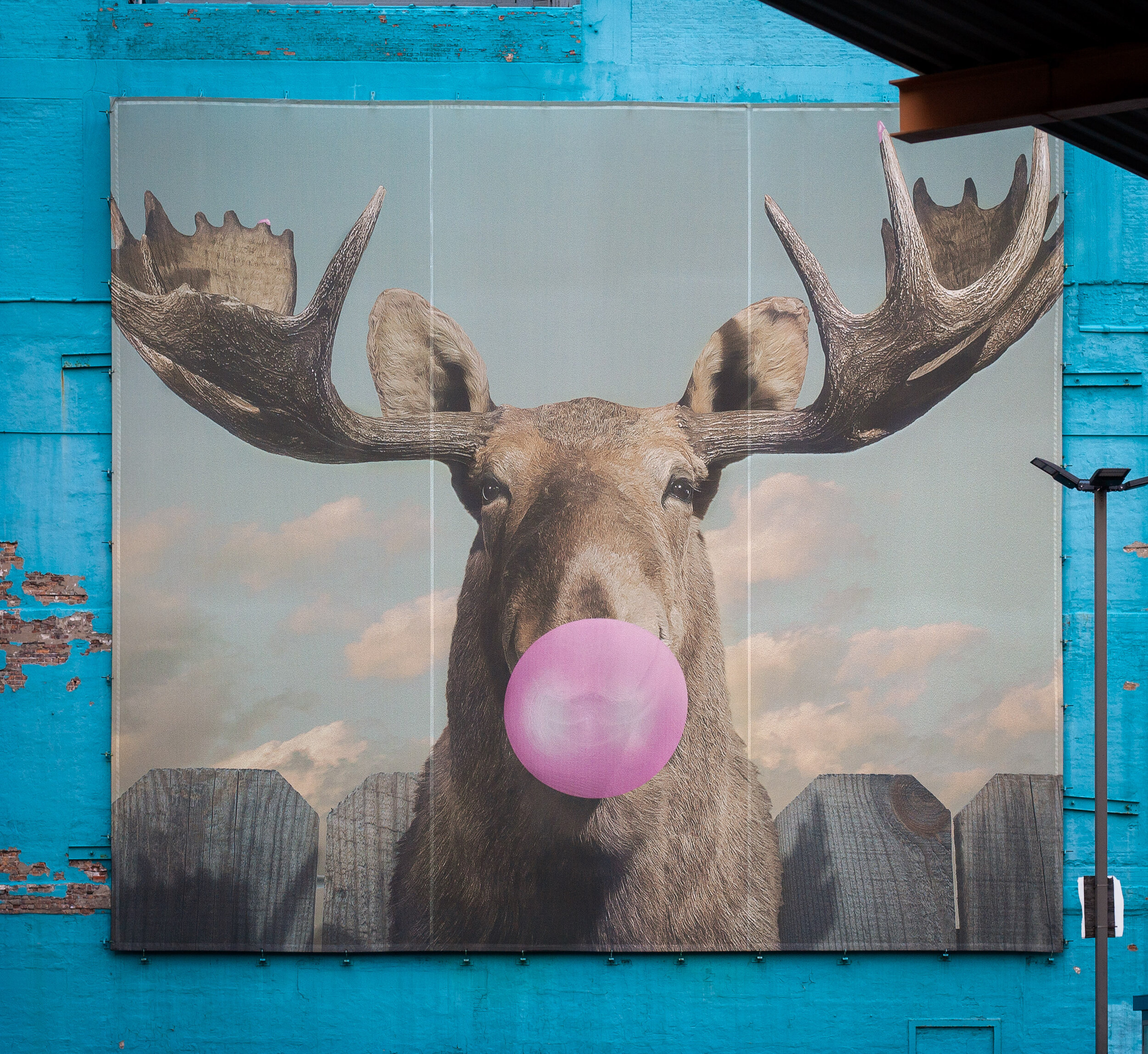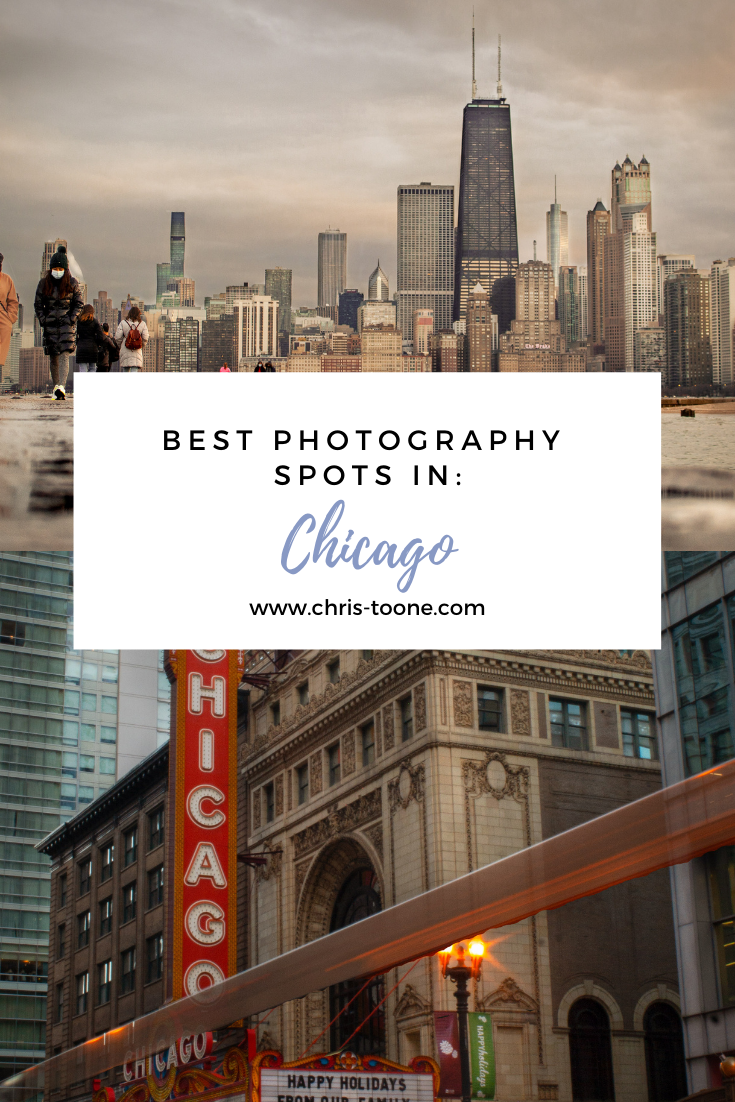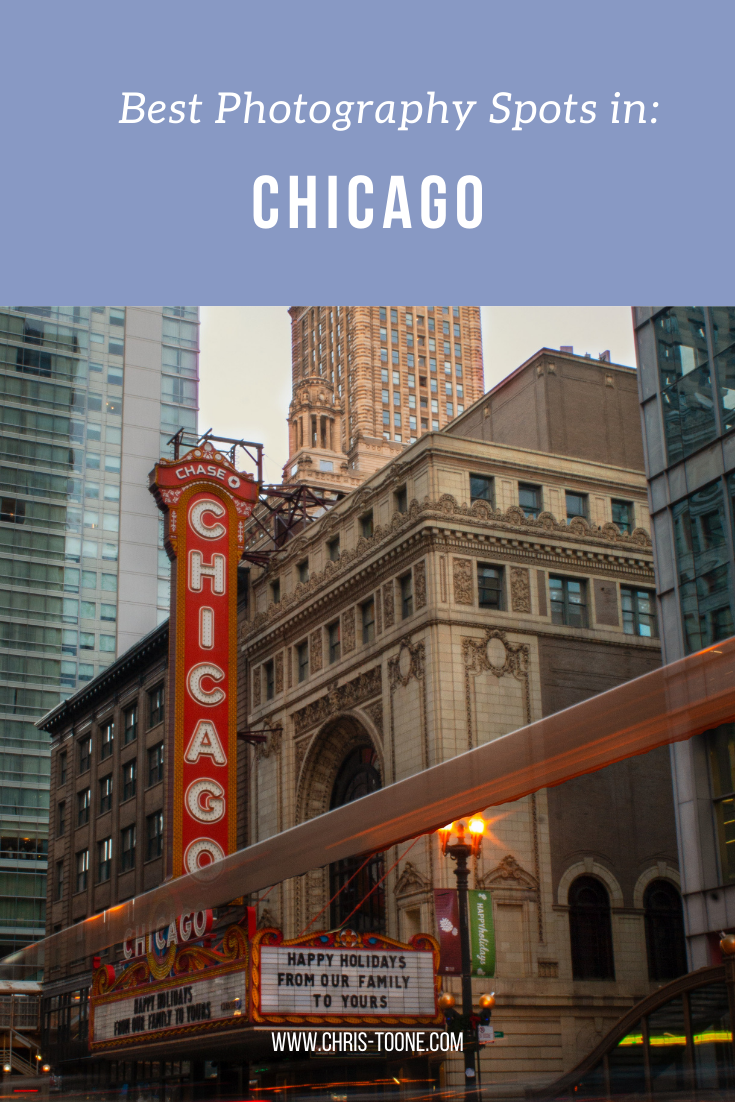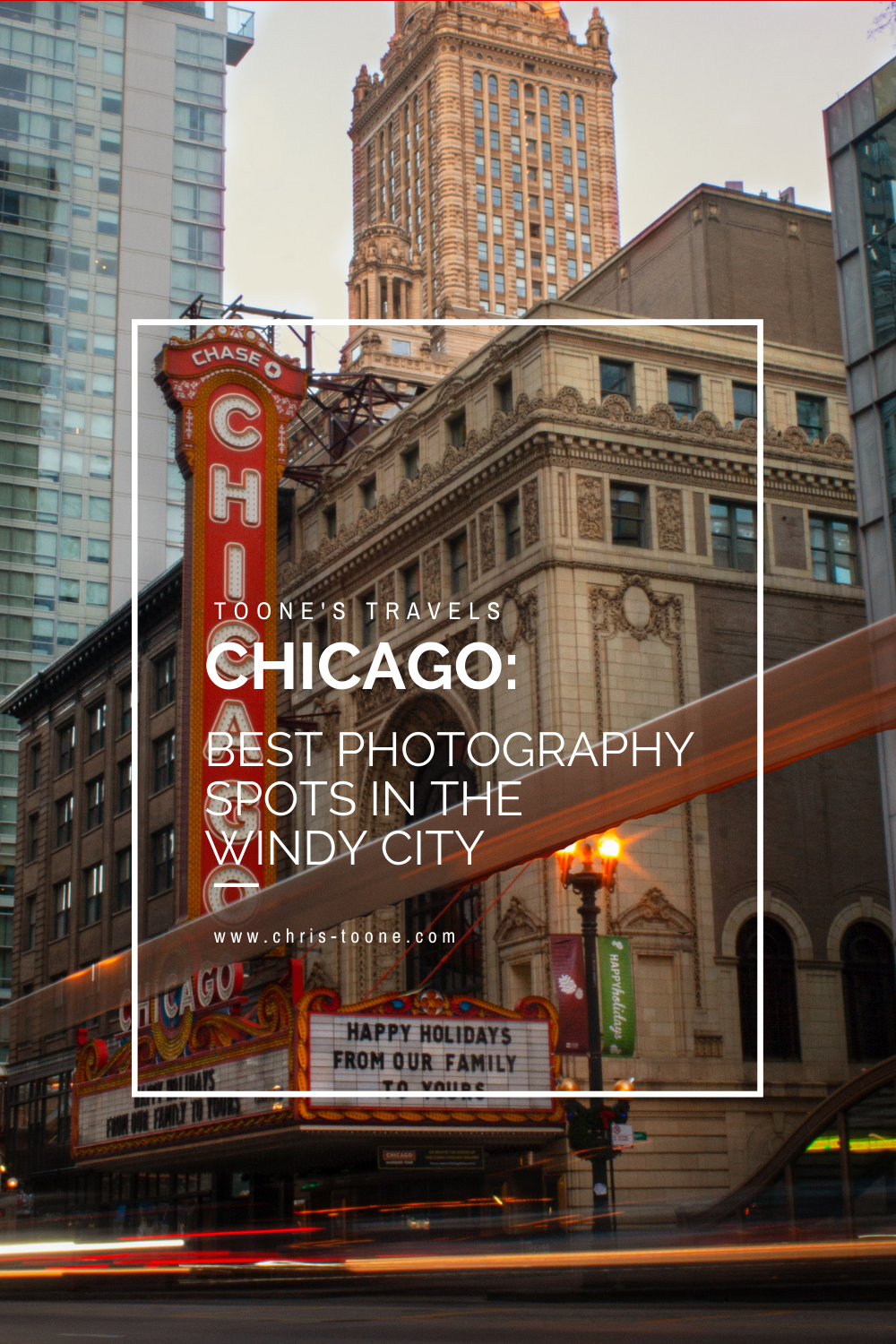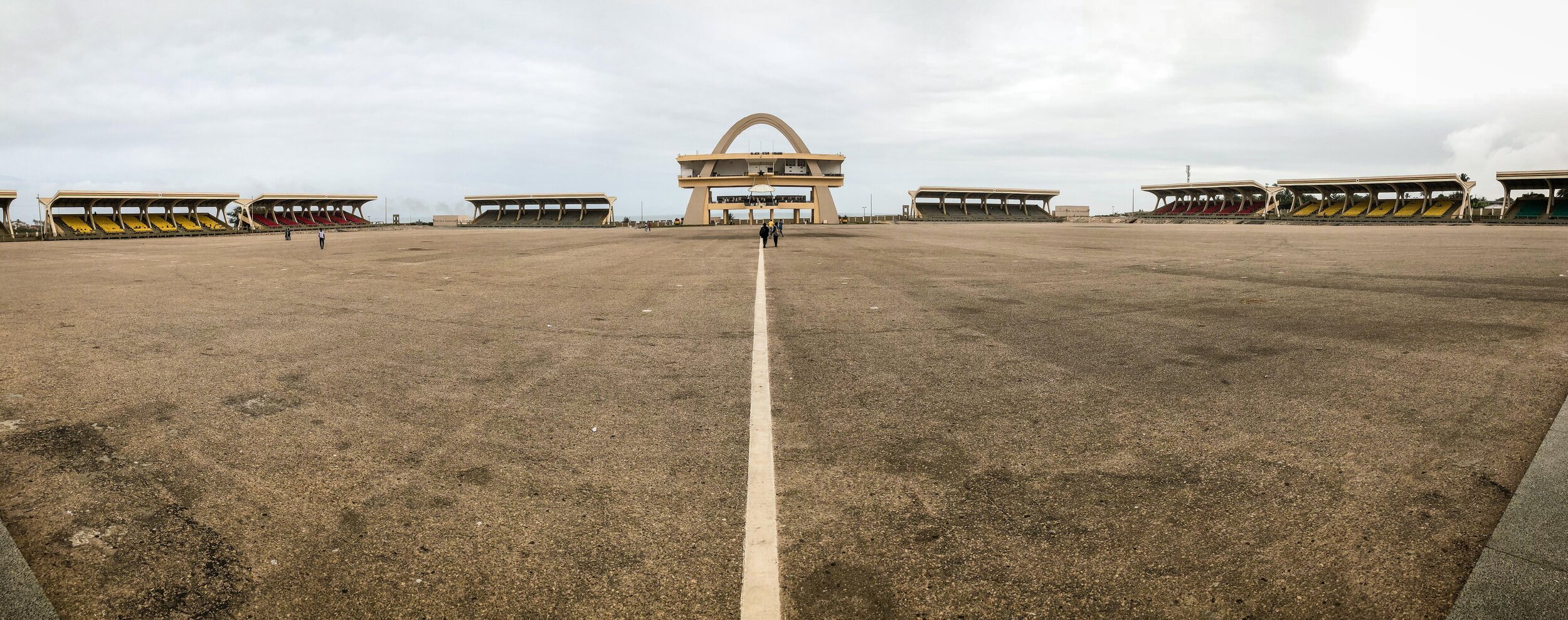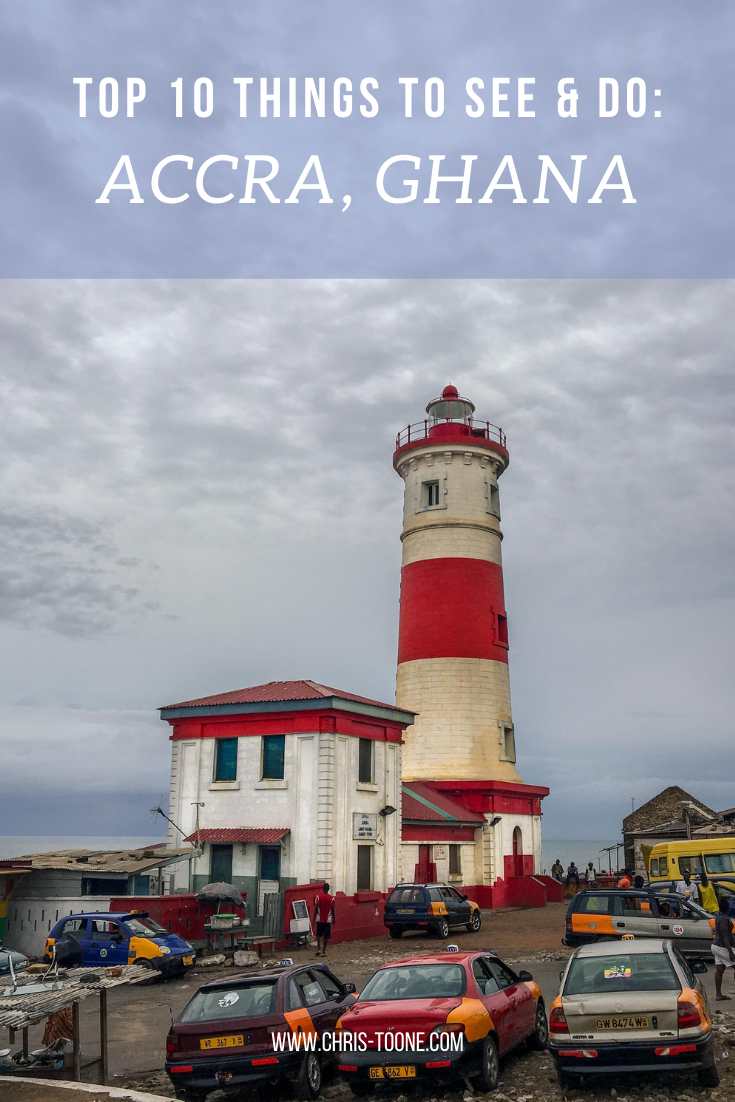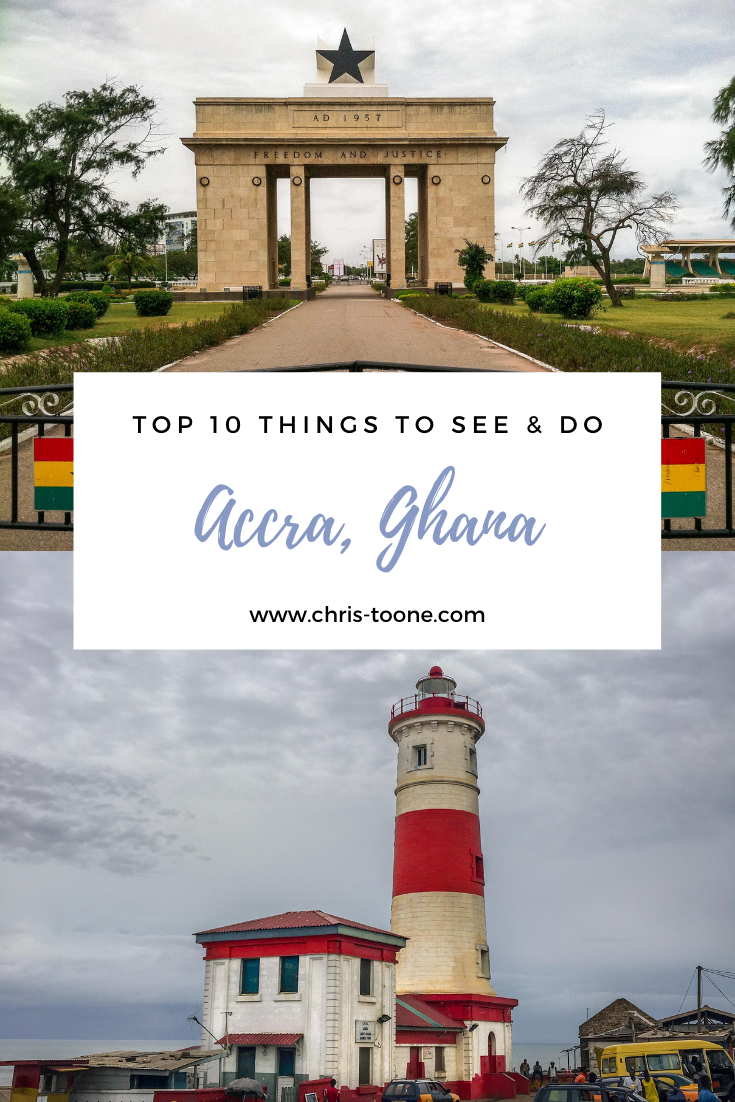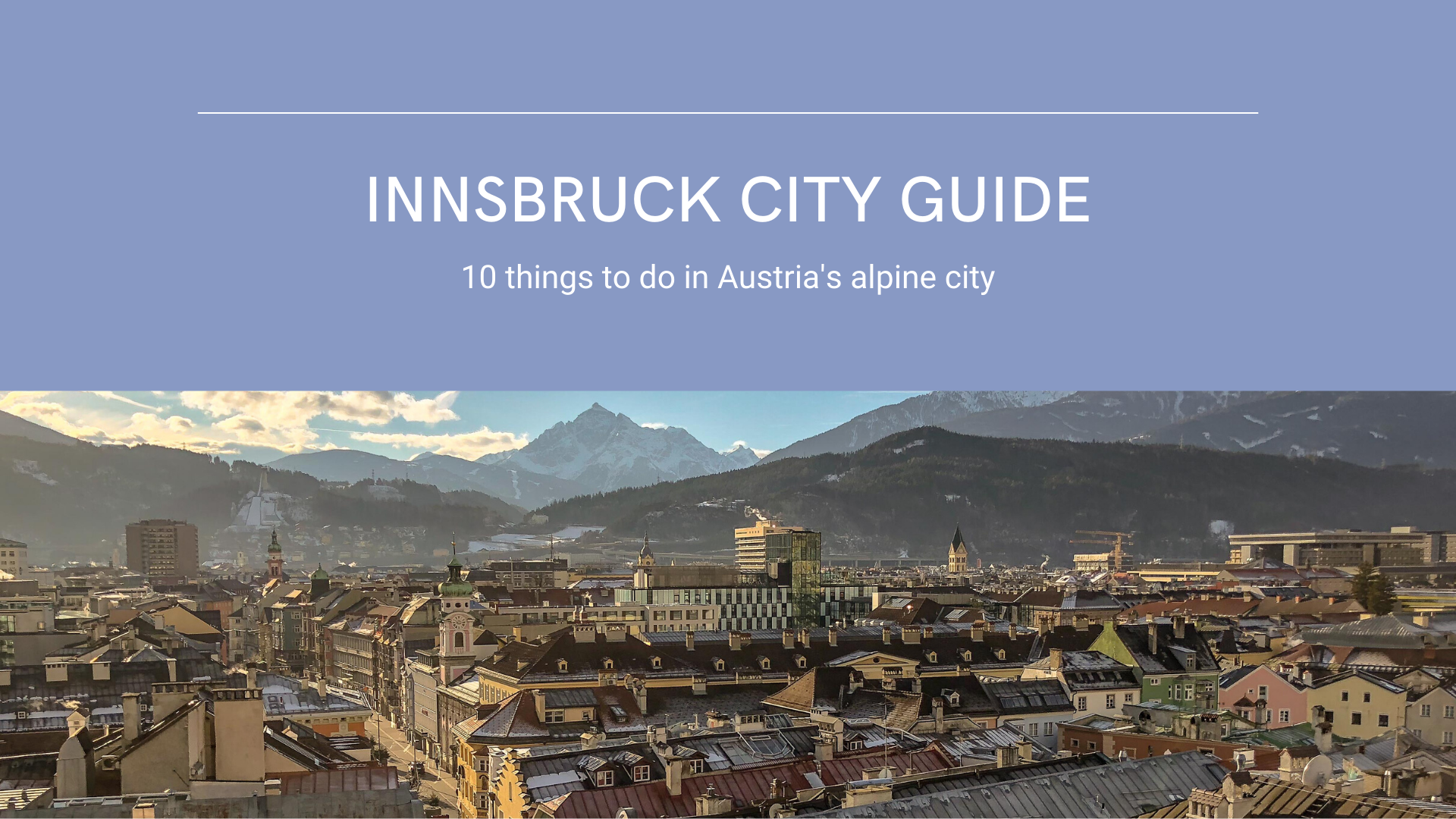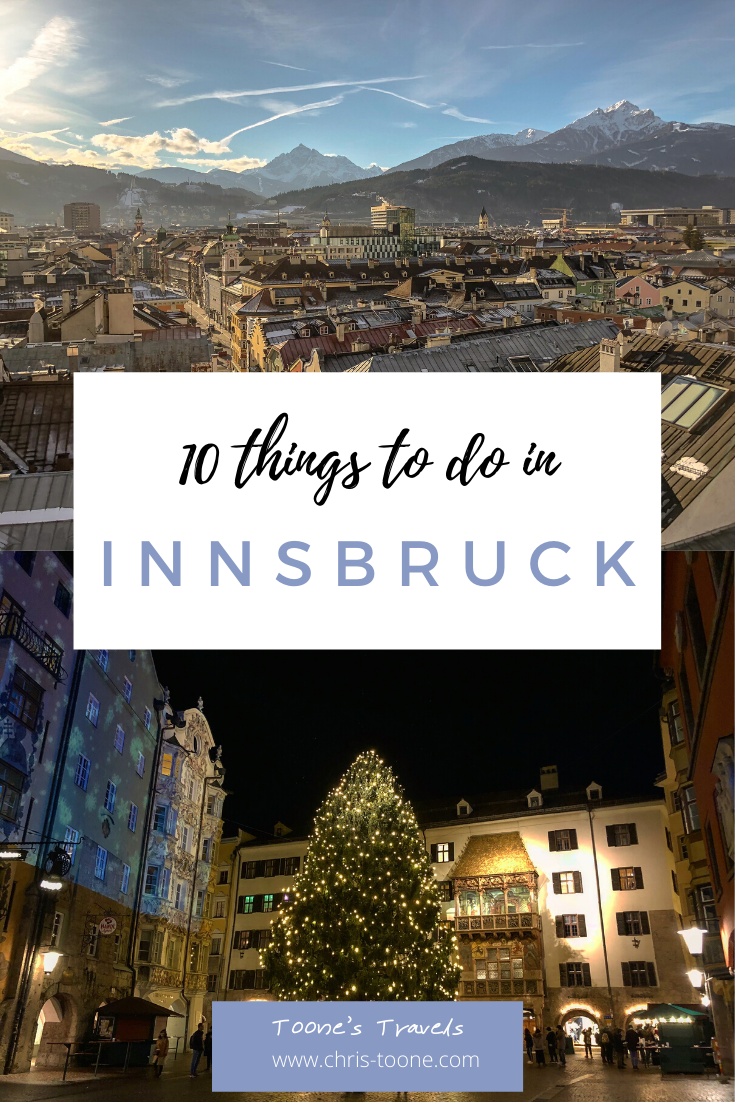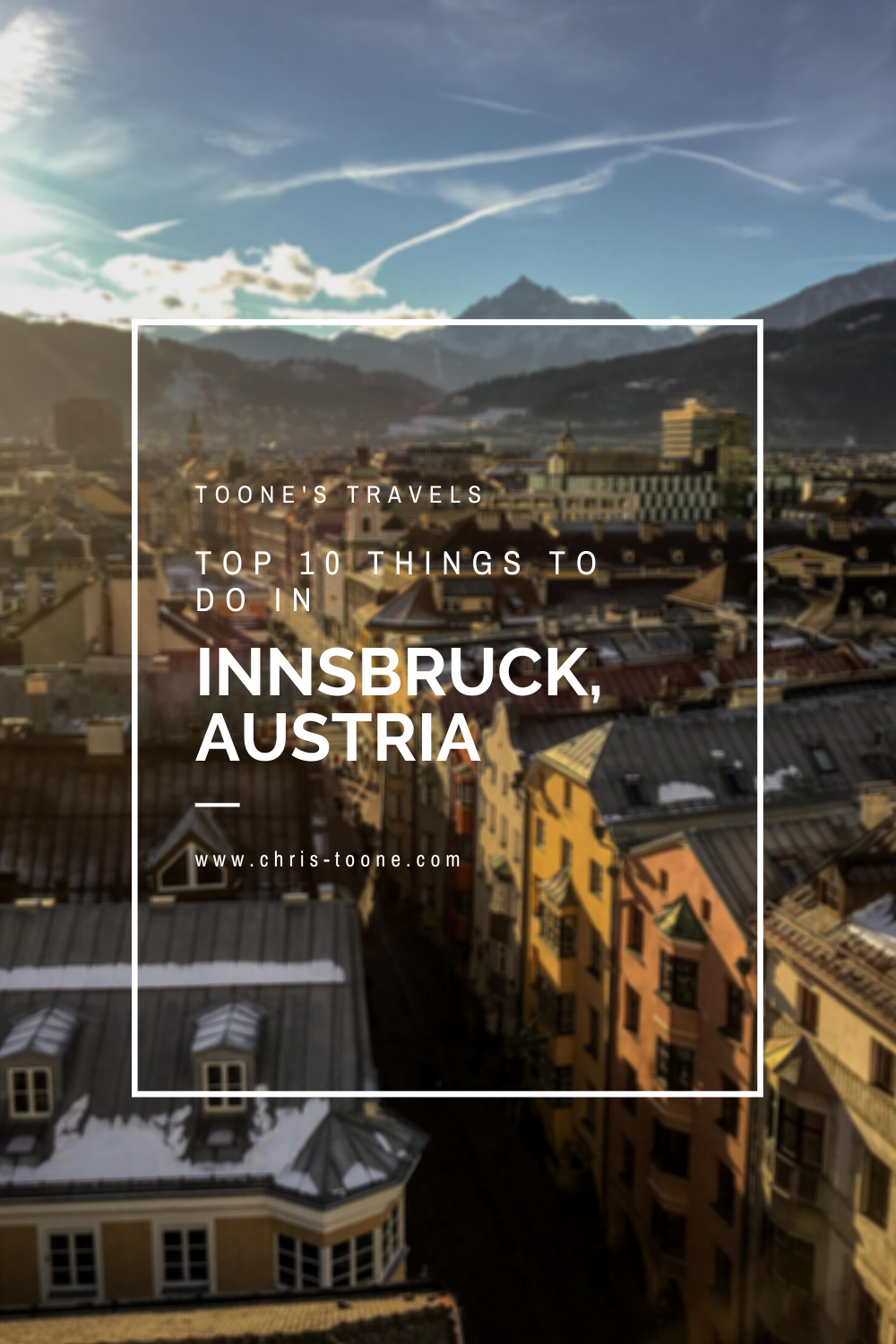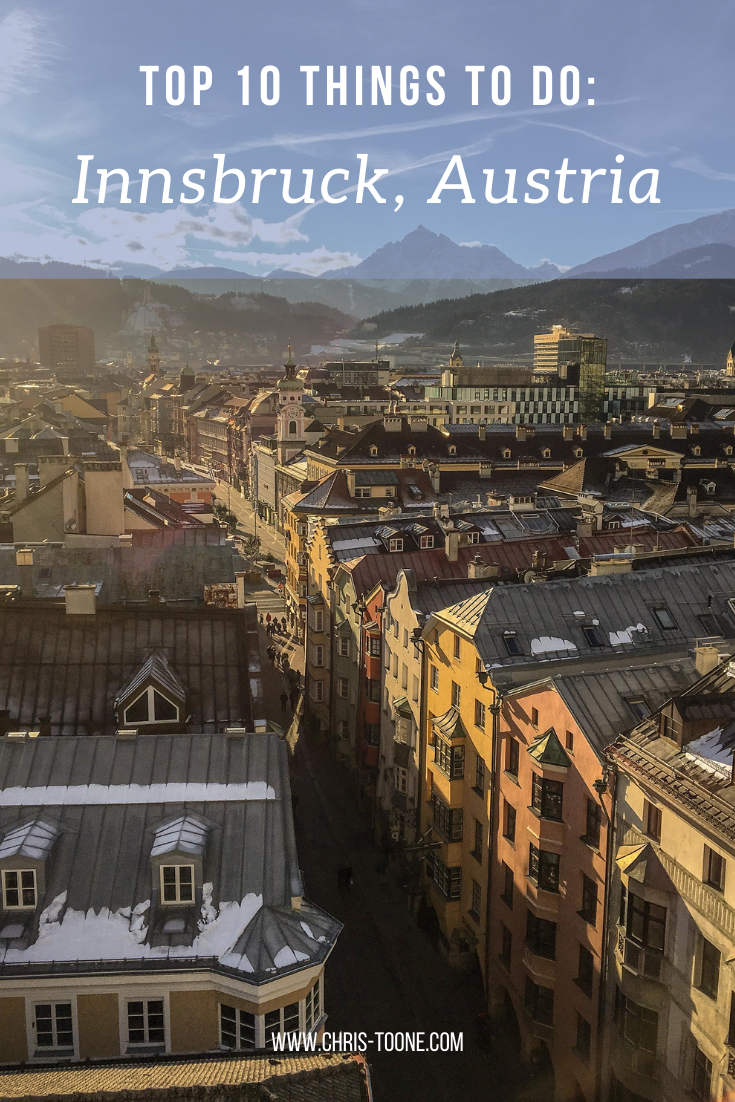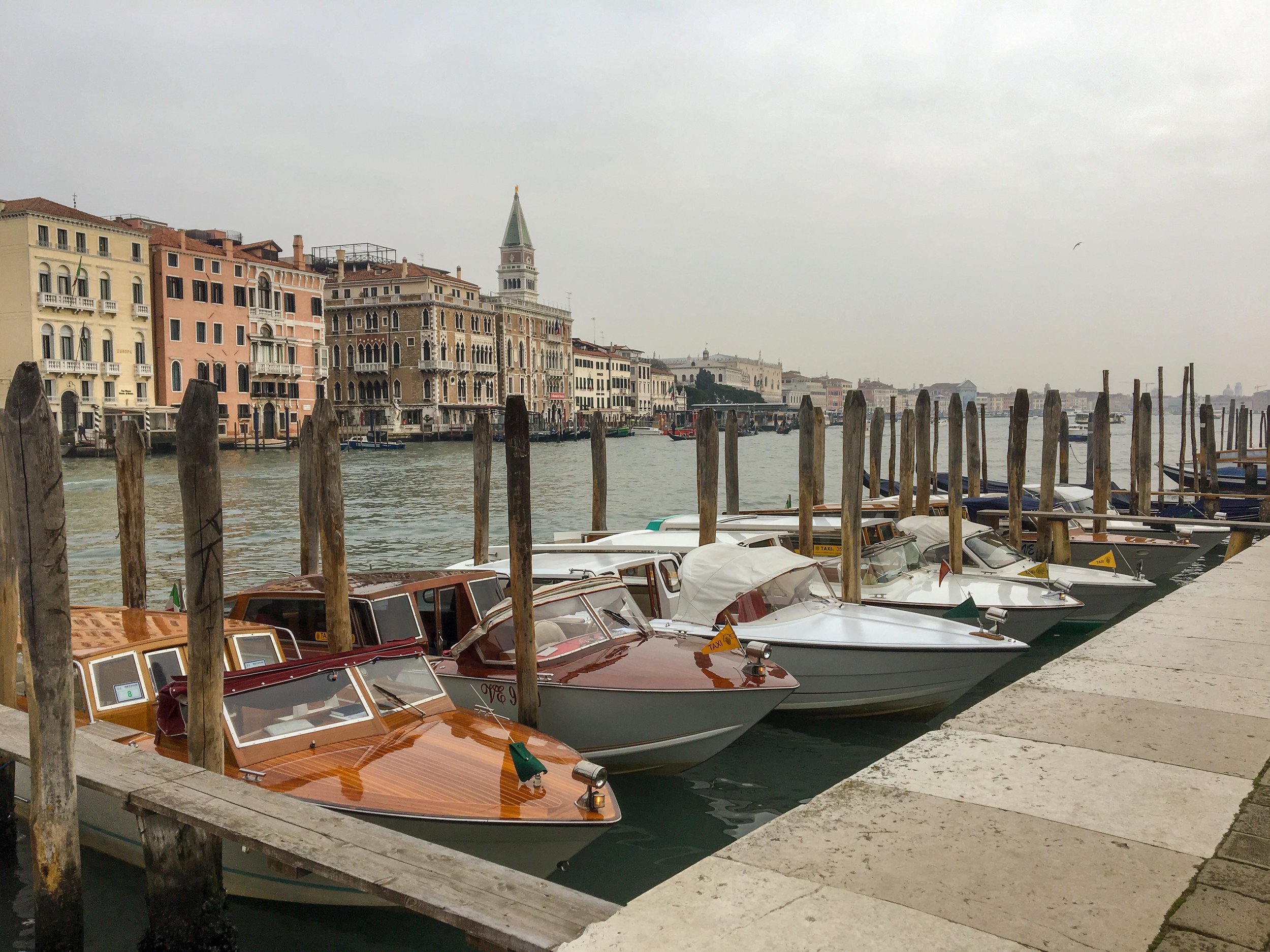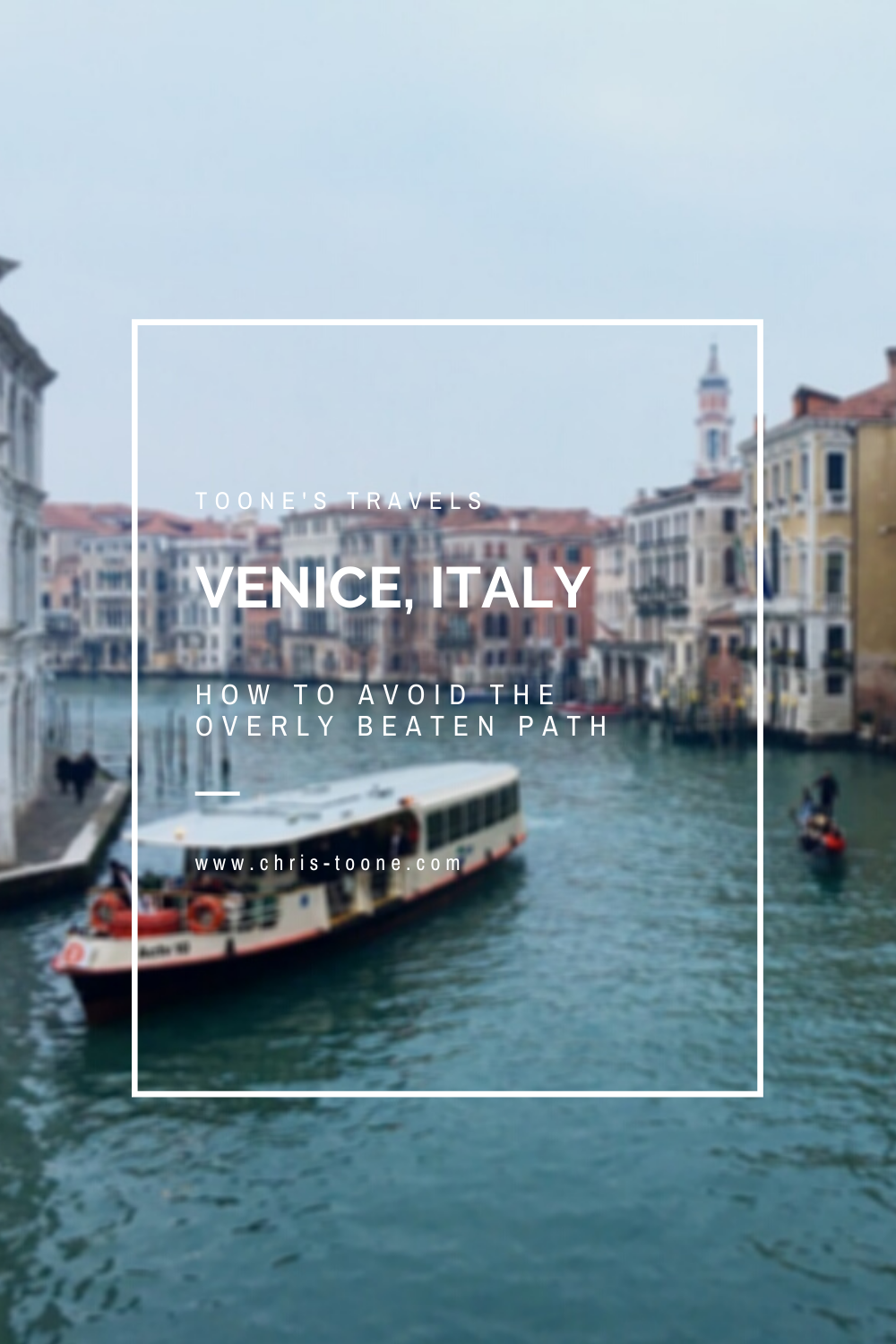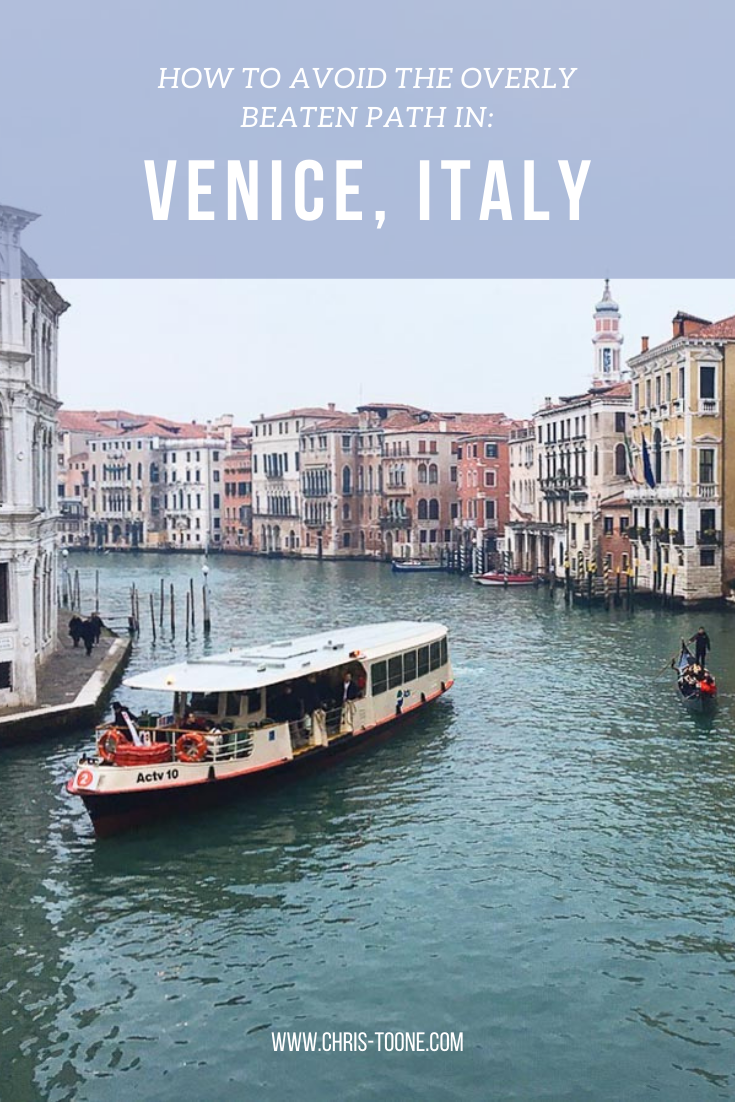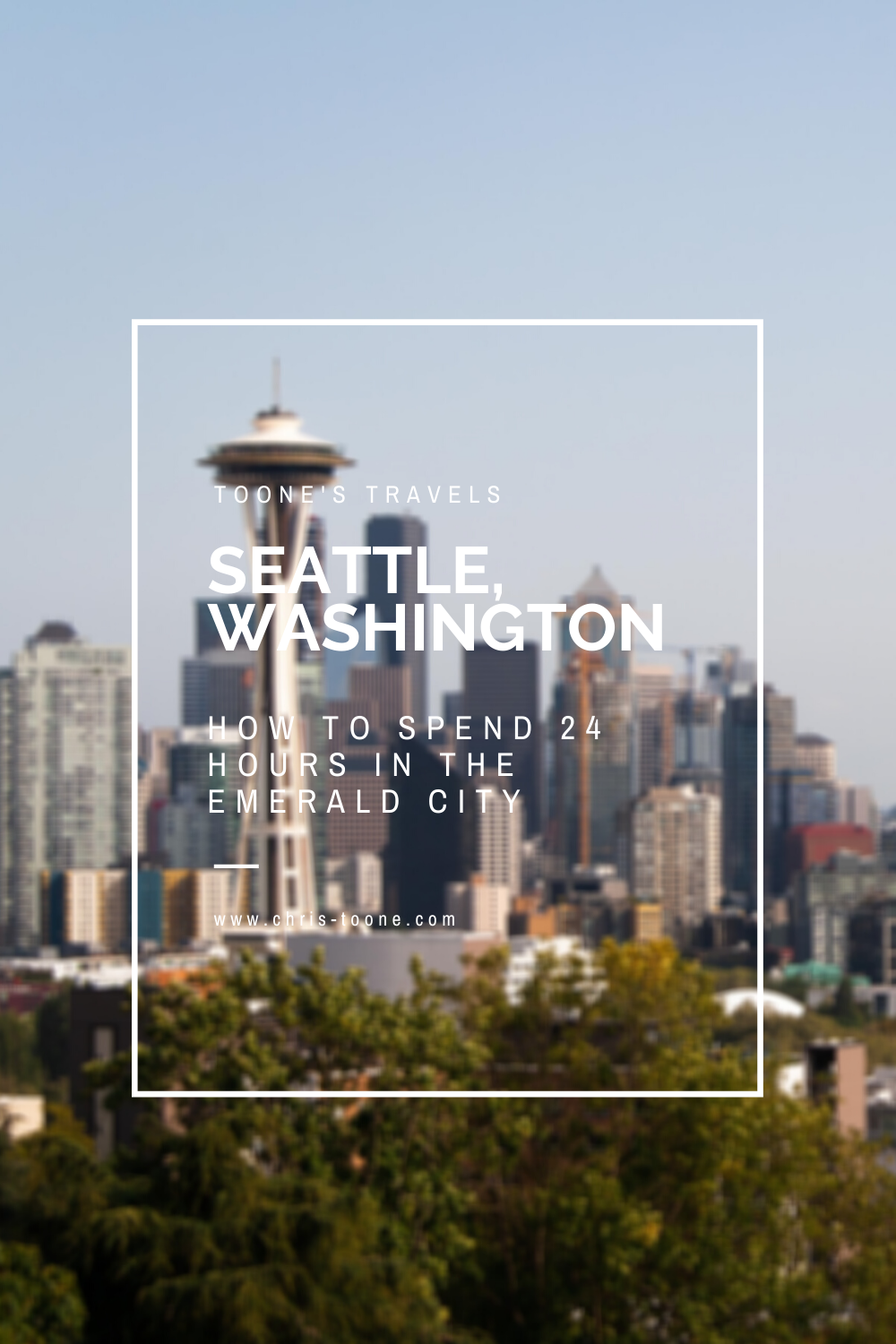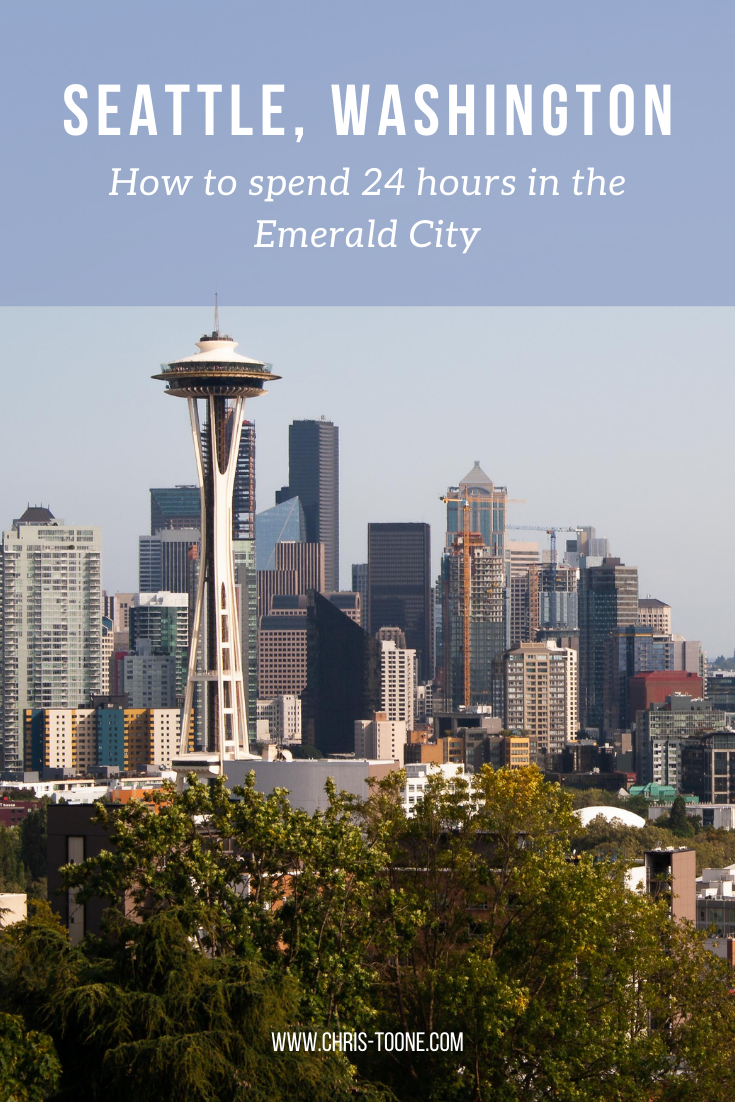Best Photography Spots in Chicago: Everywhere you need to go on your next trip to the Windy City
Skip the tourist trail and check out this comprehensive list of incredible spots to photography Chicago. From where to find the best city skyline views to which parking garages best capture the 'L' train, this is a must-have guide before your next trip!
As it turns out, moving to Chicago has been the perfect way to expand my photography skills. With the hustle and bustle of city life, the famous ‘L’ train weaving through the towering buildings, and the glistening shores of Lake Michigan to the east, there’s a unique perspective everywhere you look.
Millennium Park and Michigan Ave are by far the most visited sites in this mid-western hub but trust me when I say there’s so much more to discover.
Here’s a list of the best places to photograph Chicago.
NORTHERLY ISLAND
Northerly Island is a peninsula park along the shores of Lake Michigan that comes complete with city skyline views, including the iconic Soldier Field.
Enjoy the fresh air and greenery as you combine your skilled nature shots with that of urban life.
Fun Fact: The 5-acre lagoon is home to many of Illinois’ wildlife, including monarch butterflies and heron.
Getting There: Red, orange, and green line trains to Roosevelt & walk from there
NORTH AVE. BEACH
Located in Lincoln Park, this popular beach offers some of the best skyline scenery in the entire city. Walk the jetty, stick your toes in the sand, and snap some shots as daily life in Chicago moves all around you.
Pro Tip: This is location is adjacent to the Lincoln Park Boardwalk (below), so it’s easy to combine the two shoots.
Fun Fact: North Avenue Beach came into existence from a multi-million project in the 1930s that was partially funded by President Roosevelt’s New Deal. The beach itself is an extension of an old landfill’s narrow path along Lakeshore Drive.
Getting There: Red, brown, or purple express lines to Fullerton & walk towards Lincoln Park
North Ave. Beach in Chicago, IL
ORLEANS ST. BRIDGE
The most popular way to take advantage of this location is to shoot towards the Wells St. Bridge. This is one of my favorite scenes in the city that perfectly encapsulates life in Chicago; boats cruising along the river below, the brown line trains traversing across the river and stunning architecture rising high towards the sky.
A unique feature of Chicago is that the city is constructed in a way that each building seems to command space of its own, demanding attention as an independent masterpiece. This location perfectly captures that.
Pro Tip: Shooting towards the Wells St. Bridge is great, but don’t forget to turn around and check out the trains coming across the Lake St. Bridge as well.
Fun Fact: The two leaves of the Wells St. Bridge were built offsite and then transported via the Chicago River for installation.
Getting There: Blue, orange, pink, green, brown, and purple express lines to Clark/Lake or brown/purple line to Merchandise Mart
Downtown Chicago, IL
WELLS KINZIE GARAGE
One of my favorite parts of living in the city is finding unique angles to capture the famed ‘L’ train. There’s no better shot than the S-curve in the downtown loop.
Ride the elevator to the top of the Mart Parc Garage at the corner of Wells and Kinzie and watch the trains maneuver through the city’s infrastructure.
Remember: each level of the garage offers a different perspective of the tracks. Be sure to spend some time exploring to find what works best for you!
Fun Fact: In 2014, the “L” train was fourth in the nation for total route length at 102.8 miles.
Getting There: Brown and purple express lines to Merchandise Mart
‘L’ Train in Chicago, IL
437 N. ORLEANS
For the lesser-known view of the S-curve, head to the parking garage located at 437 N. Orleans. The top-level shows the trains as they head to/from the Merchandise Mart CTA station.
Located near the Orleans St. Bridge (above), this makes for a great day of chasing trains.
Pro Tip: For the symmetry enthusiasts, take note of the Assumption Catholic Church steeple against the red brick backdrop.
Fun Fact: The oldest sections of the “L” train began operations in 1892, making it the country’s second-oldest rapid transit system behind New York City’s elevated rail system.
Getting There: Brown or purple lines to Merchandise Mart
‘L’ Train as seen from 437 N. Orleans in Chicago
Need more ideas? Check out this list of curated tours!
PING TOM MEMORIAL PARK
This is the first park I visited after moving to Chicago and it remains at the top of my favorites.
Located in the Chinatown district, this is the perfect place to stock up on some warm buns and pastries, walk along the river, and shoot the city skyline. The boardwalk with the ornate rails helps to create some appealing leading lines.
Pro Tip: Ping Tom Memorial Park is commonly known as one of the best places to watch trains. Amtrak frequently crosses the bridge at the southern edge of the pathway while the CTA trains and freighters flank it to the east.
Fun Fact: This 17.4-acre park was originally the site of a Chicago and Western Indiana Railroad yard. The area began its transformation into a green space in 1998.
Getting There: Red line trains to Roosevelt or green line to Cermak-McCormick Place
Downtown Chicago as seen from Ping Tom Memorial Park
18th STREET BRIDGE
Another spectacular city skyline view is on the 18th Street Bridge, located just above Ping Tom Memorial Park. Point the camera up the South Branch of the Chicago River and behold the Windy City in all its glory.
This is an especially great spot for nightscape photography.
Fun Fact: With a 1967 construction date, the 18th Street Bridge is one of the youngest in all of Chicago.
Getting There: Red line trains to Roosevelt or green line to Cermak-McCormick Place
Chicago skyline as captured from the 18th street bridge in Chicago’s Chinatown
LINCOLN PARK BOARDWALK
The nature boardwalk at Lincoln Park makes for the perfect escape from the busy city streets. The pond is surrounded by prairie-style grass and is full of life with birds, frogs, and fish to name a few.
This is a great place to not only photograph the urban nature scene, but the John Hancock Building as well.
Pro Tip: Combine a visit here with North Ave Beach.
Fun Fact: The Nature Boardwalk acts as a living laboratory for the Urban Wildlife Institute in Chicago as they test new techniques to resolve human-wildlife conflict.
Getting There: Red, brown, or purple express line trains to Fullerton
Lincoln Park, Chicago
200 NORTH CLARK
In a massive city full of high rises, this is the place where you can see straight to the horizon and it feels as though the trains below are riding off into the sunset.
The reflective siding on the garage adds to the unique perspective and helps to create some stunning imagery.
Fun Fact: In 2016, the “L” train had 1,492 cars transporting passengers between 145 stations.
Getting There: Blue, green, pink, orange, brown, and purple express lines to Clark/Lake
The view from the parking garage at 200 N. Clark St. in downtown Chicago
WABASH ARTS CORRIDOR
Commonly referred to as the “living urban canvas” because new pieces are being added on an annual basis, the Wabash Arts Corridor is a unique collection of colorful murals.
Stretching from as far north as Polk and as far south as Roosevelt, this is the perfect place to wander around with your camera. Be sure to check the website for more information, including a walking map of each masterpiece.
One of the most popular works is the Moose Bubblegum Bubble by artist Jacob Watts.
Pro-Tip: Start on the southern edge at Roosevelt and make your way north back into the city’s downtown loop.
Fun Fact: The Wabash Arts Corridor was founded in 2013 by Columbia College and continues to grow into being one of the largest, unique, and accessible art projects in the country.
Getting There: Red, orange, and green line trains to Roosevelt & walk north
Moose Bubblegum Bubble mural by artist Jacob Watts
CHICAGO THEATER
Ok, you caught me. I can feel you rolling your eyes.
The vintage Chicago Theater sign isn’t exactly “off the beaten path”, but it does make for some pretty great long exposure shots and it’s a quick and easy stop on your tour of the city.
Fun Fact: The Chicago Theater was the first large movie palace in America and quickly became the prototype for all others. Constructed in a French Baroque style, look closely at the theater’s exterior to see if you can find the miniature Arc de Triomphe.
Getting There: Pink, green, brown, orange, and purple line express trains to State/Lake
Chicago Theater standing tall in the downtown traffic
The Chicago Theater shines bright in the snow
The truth is you just need to come here yourself and wander around. Each neighborhood, train line, and person has something unique to offer!
Stay safe & happy travels.
Enjoy what you read? Pin this post for later!
Top 10 things to see and do in Accra, Ghana
From historical monuments to bustling markets, Ghana's capital city of Accra has plenty of diverse experiences to offer. Here 10 of the top things to see and do... enjoy the adventure!
Please note: This post has been updated as of December 2023
Approximately the size of Texas, Ghana encompasses an arid climate up north, rainforests in the south, sunny beaches, diverse religions, rich culture, and more than 250 dialects.
So, how can one possibly get a beat on all that this West African nation has to offer? Start with Accra; the place where it all melds together in joyful harmony.
Here are 10 of the top things to see and do in Accra, Ghana!
1. LOSE YOURSELF IN ALLEYS OF MAKOLA MARKET
Largely considered as the economic heart of Accra, Makola Market can be overwhelming to first-time visitors, and for good reason.
There is no official welcome sign or arrows that guide visitors to the various subsections, rather the city’s streets quickly transition from flowing traffic to full of pedestrians and goods. Rest assured anything you might need can be found: a toothbrush, sunglasses, veggies, smoked fish, soap, second-hand clothing, and even toys and souvenirs.
Personally, my favorite thing to do here is to track down a bofrot vendor, Ghana’s version of a donut, and munch on the delicious snack as I wander through the streets in search of something new.
It’s important to remember that although Ghana is commonly referred to as “Africa for beginners” crime still exists, especially within such a high density of people. Be sure to keep your belongings close to avoid pickpockets and keep in mind that all legitimate business is done out in the open. There’s no need to wander into back alleys or enclosed spaces.
Finally, enjoy it.
It can certainly be a bit overwhelming to first-time visitors, but don’t let that deter you but don’t let that keep you way. Rather, use Makola Market as a sort of “right of passage” to truly experience the local life in Accra. It’s something that everyone should experience at least once, even if just for a moment.
Don’t forget to negotiate your purchases - that’s half the fun!
A small section of the bustling Makola Market in the heart of Accra, Ghana
2. STROLL THROUGH THE KWAME NKRUMAH MEMORIAL PARK
Kwame Nkrumah Memorial Park was dedicated to the first Prime Minister of Ghana in 1992 and is located on the site of the former British polo grounds. This is the exact spot where Dr. Nkrumah once stood to declare Ghana’s independence from British rule before uttering his famous line: “Ghana is free forever”.
A mausoleum is located within the park’s walls and holds the remains of Dr. Nkrumah and his wife, Fathia. To the naked eye, the exterior seems an odd architectural design, but to the people of Ghana, it was built to resemble an upside-down sword, the Akan symbol of peace.
In total, the park covers 5.3-acres and also encompasses a museum which houses photographs, letters, and more from Dr. Nkrumah’s storied life.
It’s easy to spend a couple of hours here, soaking up the palpable history of the long and grueling fight for freedom. A powerful experience, to say the least, and one of the most important sites for first-time visitors to Accra!
3. PAY A VISIT TO BLACK STAR SQUARE
Black Star Square is a massive open-air arena of sorts in the heart of Accra that accommodates 30,000 people. It now hosts all of Ghana’s national parades and holiday gatherings, most notably the Independence Day celebrations held on March 6th each year.
This architectural giant was originally commissioned by Ghana’s first Prime Minister and President, Kwame Nkrumah, to honor the visit of Queen Elizabeth II in 1961.
The expansive area includes Independence Arch on the southern end of the square with the Gulf of Guinea as a backdrop while the Memorial of the Unknown Soldier stands opposite to the north, honoring all of the fallen souls during Ghana’s fight for independence.
By day the square is empty, showing off its sheer size to all who visit. There is no entry to fee walk around and photographs are generally permitted, however keep an eye for guards standing around any of the specific monuments, most frequently Independence Arch. At that point it’s best to exercise your travel photography etiquette and ask before taking a close-up photo.
A visit to Black Star Square certainly won’t take long, but it’s a convenient stop that’s located near several other points of interest, including Black Star Gate and Accra Sports Stadium.
An empty Black Star Square looking towards
4. CLIMB TO THE TOP OF BLACK STAR GATE
Technically part of the Black Star Square complex and sometimes referred to as Independence Arch, this stunning gate stands alone in the middle of a roundabout on the 28th of February Rd. (named out of respect for the 1948 riots) and is impossible to miss.
Lined with beautifully planted gardens, the Black Star Gate represents the struggle for Ghana’s independence. The star at the top, not unlike the one that can be found at the center of the country’s flag, dons the top of the structure on all four sides and symbolizes African emancipation.
The other colors of the flag, red, yellow and green, represent the blood of those who died for independence, mineral wealth, and Ghana’s rich forests and natural resources, respectively.
Be sure to climb to the top of the Black Star Gate and take advantage of the spectacular city views across Accra. This is a great photo op for an aerial perspective over the massive Black Star Square, Accra Sports Stadium, and Osu Castle.
Although it’s free to do, I’d recommend tipping the guide that escorts you up.
Black Star Gate in downtown Accra, Ghana
5. GO BACK IN TIME AT OSU CASTLE
Once referred to as Christiansborg, Osu Castle is now a UNESCO World Heritage Site and stands on the shores of the Atlantic Ocean, serving as a constant reminder to Ghana’s gut-wrenching past.
Over the years, control of the castle changed hands between the Danes, Norwegians, Portuguese, and British and even served as the seat of the Ghanaian government in the post-slavery era up until it was moved to its current location at the Jubilee House in 2013.
Today, the castle offers visitors the chance to wander the halls British officials once walked and explore the harsh conditions of the slave dungeons.
The most meaningful experience, however, is the solemn “Door of No Return,” ominously named to symbolize the final time that those held captive would step foot on their native soil before boarding a ship bound for the New World.
It’s worth a visit, especially if you don’t have the time to travel to Cape Coast’s castles. Keep in mind that Osu Castle remains within a security zone and, as a result, is only open to the public on Fridays between the hours of 9:00 am and 4:00 pm.
6. WATCH A SOCCER MATCH AT ACCRA SPORTS STADIUM
The Accra Sports Stadium is a 39,800 seat facility that’s mostly used as the home venue for the Hearts of Oak and Accra Great Olympics F.C. soccer teams of the Ghana Premier League.
Although an upbeat atmosphere accompanies match day, it doesn’t come without its fair dose of unfortunate history.
In 2001, it was the site of the worst stadium disaster in all of Africa that claimed the lives of 126 fans. On that fateful day, Hearts of Oak was playing in a match against Asante Kotoko and trailed 1-0 until two quick goals changed their fortune.
Disappointed Kotoko fans responded by throwing plastic bottles on the pitch before law enforcement retaliated with tear gas. Due to the stadium’s poor design, fans bottlenecked at the limited exits and 116 supporters died of compressive asphyxia while another 10 passed away from trauma.
Today, a bronze statue of a fan carrying another fan to safety stands proudly outside of Accra Sports Stadium and reads “I am my brother’s keeper.”
Attending a professional match here remains one of my all time favorite experiences in Accra. In all honesty, I don’t remember how the game unfolded. We were too busy singing, dancing, and blowing vuvuzelas in the rain with the diehard supporters.
Accra Sports Stadium and home of Hearts of Oak, the most successful club soccer team in Ghana
7. JAMESTOWN LIGHTHOUSE
The 92 ft tall Jamestown Lighthouse was built in the 1930s and stands as an iconic staple of the Jamestown neighborhood, which was once a major settlement of Europeans during the slave trade.
Although no longer operational, it’s still possible to climb to the top and take in the fresh air the blows in off the Gulf of Guinea while overlooking the fishing village, historic Fort James, and surrounding Accra.
Pay close attention to where slabs of cement jut out into the ocean. That’s where slaves once walked en route to ships bound for the New World.
The lighthouse is kept under lock and key by local volunteers. They represent a non-profit organization that works in the area and although the building is technically free to visit, it is expected that you provide a donation for their willingness to guide a short tour.
They may try to encourage you to visit Fort James and the fishing village as well, but it’s okay to say no. Simply donate a comfortable amount (5 GHC per person usually suffices) and continue on your way!
Jamestown Lighthouse standing tall in Accra, Ghana
8. KICK BACK AND RELAX AT LABADI BEACH
Adored by locals and foreigners alike and commonly referred to as “La Pleasure", Labadi Beach is a scenic stretch of sand in the Labadi neighborhood of Accra.
Visit during the day and enjoy the views as you sip on a local beer while waiting for your fresh fish at one of the various stalls before wading into the waves. Grilled tilapia, spicy kebabs, and jollof rice are just a few of the dishes available.
Once the sun goes down, the music turns up and the party begins! It’s not uncommon to find reggae artists, disco DJs, and other live bands blasting a cacophony of sounds late into the night.
As you might imagine, a large part of Accra turns up on the weekends, so for a more relaxing experience, it’s best to visit during the weekday. Either way, the small entrance fee (around 20 GHC) is worth the price!
9. SHOP ‘TIL YOU DROP AT THE CENTER FOR NATIONAL CULTURE
Although the Center for National Culture may sound like a museum of sorts, it’s actually a souvenir mecca. From wood carvings to backpacks made with the traditional kente cloth, jewelry, gorgeous canvas paintings, and even musical instruments, these vendors have it all - and they’re not afraid to tell you about it!
Don’t be surprised to find yourself surrounded by new “friends” the moment you step out of the taxi, eagerly ushering you to their respective shops. Stand your ground, tell them you’ll stop by later, and stick to your plan.
Right away you’ll notice that the market is inundated with lookalike items, which quickly explains everyone’s urgency to sell their version. My best advice is to take a lap: slow enough to get eyes on what’s available, but quick enough to avoid any aggressive selling strategies.
Another useful tactic is to use your instincts and make a friend. Spend some time talking, build trust, and ask for advice as to how much the items around the market that peaked your interest should cost. It makes the ensuing negotiations much easier!
An artisan delicately carves a bowl at the Center for National Culture in Accra, Ghana
10. HEIGHTEN YOUR SENSES AT THE ARTISTS ALLIANCE GALLERY
Three stories of unique artwork and crafts fill the halls of an old tower that overlooks the Gulf of Guinea.
The Artists Alliance Gallery was first established by the famous artist, Ablade Glover, and has since grown to include the work of both well-known but also up and coming artists of Ghana.
From woven kente cloth pieces to vibrant canvas paintings, a wide array of eye-catching visuals are available to peruse as well as purchase.
Pay special attention to the exorbitantly carved coffins in the shape of crabs or a pair of Nike shoes. In Ghana, it’s popular in to bury a loved one in something that represents their being - whether depicting a favorite item or former occupation.
Admission is free and it makes for a great afternoon of embracing the vibrant and artistic culture of Ghana!
So, there you have it. It’s time to get out and explore Accra, Ghana!
What interests you most on this top 10 list? Is there something I’ve missed? Let me know in the comments below!
As always, stay safe & happy travels.
Don’t want to wander? Check out these tour options!
Sharing is caring… pin this post!
Innsbruck City Guide: 10 things to do in Austria's alpine city
From the local flavors of speck and strudel to the stunning mountainous views that surround the city, Innsbruck has something for everyone. It continues to sit at the top of the list of my favorite European cities and I can guarantee you’ll have a great time!
Please note: All information listed below is up to date as of May 2023
Tucked away within the shadows of the surrounding Alps lies Innsbruck, Austria.
A mountainous paradise that’s known for its rich Tirolean history and the epicenter of winter sports, having hosted the Olympics in both 1964 and 1976.
To this day, it remains one of my favorite European cities of all time and by the end of this post, you should have a pretty good idea as to why!
Let’s explore 10 of the top things to do when in Innsbruck, Austria.
1. SAVOR A STRUDEL AT CAFE KROLL
Nestled within Innsbruck’s old town, Cafe Kroll serves up some of the city’s best homemade strudel as voted by tourists and locals alike.
You can be sure to find a steady stream of customers from the moment the doors open in the morning straight until closing. It’s easy to be overwhelmed by the sheer volume of variety offered, but I would personally recommend giving the apricot and hazelnut strudel a try if in the mood for something sweet or the spinach and feta for savory.
Pro Tip: Cafe Kroll offers several gluten-free items, so there’s no excuse to stay away!
Hours: 6am - 9pm daily
Address: Hofgasse 6, 6020 Innsbruck, Austria
Website: www.strudel-cafe.at
2. EXPERIENCE THE JEWEL OF THE ALPS
Widely known as the “jewel of the Alps", the Nordkette mountain range sits just north of Innsbruck and rises to 8,651 feet at its highest point (Kleiner Solstein Peak) and is part of Austria’s largest Nature Park, the Karwendel.
Find your way to Innsbruck’s Hungerburgbahn Station and hop in the Hungerburg Funicular before catching a tram up to Seegrube (6,250ft.) and Hafelekar (7,401ft.) to enjoy the panoramic views of the city and surrounding mountains.
In the winter months, the area becomes a popular ski destination, the Hafekeler run being one of the steepest in all of Europe, and in the summer months, visitors can enjoy expansive hiking, climbing, and mountain biking.
It made for a great Christmas Day adventure during our most recent trip!
Pro tip: The Hungerburg Funicular will also take visitors to the Alpine Zoo, the highest in all of Europe. A combination ticket for the funicular and zoo entry will cost 19 euros per person.
Helpful Hints: The funicular from Hungerburgbahn Station is operational from 7:15am - 7:15pm M-F, 8am - 7:15pm Saturday and Sunday and runs every 15 minutes. The Seegrube cable car is open daily from 8:30am - 7:30pm while the Hafelekar tram operates from 9am - 5pm daily. Both run every 15 minutes.
Address: Hungerburgbahn Station, Rennweg 3, 6020 Innsbruck, Austria
Cost: Varies based one how many trams you choose to take, but expect to pay around 36.50 euros per person to get from the Hungerburgbahn Station to the top of the Hafelekar cable car (ski pass not included).
Website: More information on the entire area can be found by clicking here.
View from the top of the Hafeleker cable car
3. LOSE YOURSELF IN THE LAND OF SWAROVSKI CRYSTALS
Opening in 1995, the Swarovski Kristallwelten (crystal worlds) welcomes tourists to wander around 17 different underground “chambers of wonder,” each filled with stunning crystal art created by international artists.
When strolling through the gardens, be sure to not miss the Crystal Cloud, a piece comprised of 800,000 hand-mounted Swarovski crystals. Another fan favorite is the Crystal Dome, a room that contains 595 mirrors all working together to create stunning lighting and reflections.
At the very least, exploring the halls is a humble reminder to keep saving your money!
Pro Tip: Although the Kristallwelten is located outside of Innsbruck, a shuttle runs back and forth 5-6 times a day from various locations and costs 10 euros for a round trip ticket. More info can be found here.
Address: Kristallweltenstrasse, Wattens, Austria
Hours: 8:30am - 7:00pm, daily
Cost: 19 euros or free with an Innsbruck Card.
Website: www.kristallwelten.swarovski.com
4. STEP INTO THE RENNAISSANCE AT AMBRAS CASTLE
Once home to Archduke Ferdinand II, Ambras Castle is located in the southern part of Innsbruck and can easily be reached by tram and bus.
Ferdinand II was the prince known for elevating arts and sciences to new levels during his lifetime and the castle’s residential rooms have been transformed into the Habsburg portrait gallery (open to visitors between April and October).
Tickets cost just 12 euros and can be purchased ahead of time by visiting the castle’s website.
Address: Schlossstrassse 20, 6020 Innsbruck, Austria
Hours: Daily from 10:00am - 5:00pm, closed during the month of November
Website: Click here for more information or to purchase tickets.
5. CLIMB TO THE TOP OF INNSBRUCK CITY TOWER
I’ve visited Innsbruck more times than I can count, often passing through for a day or two, but I always make sure to leave time to climb the 148 stairs to the top of the Innsbruck City Tower.
It’s easily my favorite 360-degree view of the city, standing amongst the rooftops and watching life pulsate through the city streets below.
When the tower was still operational, it was manned by watchmen who were tasked with announcing the time every hour and warning the townspeople of incoming danger. The building also housed a prison during the Middle Ages on the ground floor.
Costing only 4 euros per person, this is one of the best “bang for your buck” things to do in Innsbruck and it doesn’t take much time at all! Important note: There is NO elevator available, so it may not be suitable for everyone.
Address: Herzog-Friedrich-Strasse 21, Innsbruck, Austria
Hours: Daily from 10:00am - 5:00pm (winter) and 10:00am - 8:00pm (summer)
Website: Click here for more information
View from the top of the Innsbruck City Tower
6. DEVOUR A PLATE OF SPECK AT TIROLER SPECKERIA
Since 1909 Tiroler Speckeria has been serving up some of the best Tyrolean bacon, commonly known as speck, found in all of Innsbruck.
Do yourself a favor and order the specialty board (15 euros per person). It’s a great way to experience the diversity of Tyrolean flavors and I assure you it will be worth every cent.
If you’re short on time, the owners also offer up sandwiches to take on the go, but I’d recommend taking the time to sit down for a short meal. It’s hard to beat the ambiance and delicious food.
Address: Hofgasse 3, 6020 Innsbruck, Austria
Hours: Daily from 9:00am - 6:00pm
Website: www.speckeria.at
7. CATCH A LOCAL SPORTING EVENT
There are two main sporting events to check out: Football Club Wacker Innsbruck and Hockey Club Tiroler Wasserkraft Innsbruck.
Formed in 2002, FC Wacker plays their home matches at Tivoli Stadium in downtown Innsbruck and currently competes in the Austrian Football Second League. The 16,000-seat stadium played host to the likes of Spain, Russia, Sweden, and Greece during the 2008 European Championships.
HC Tiroler Wasserkraft plays across the street from Tivoli Stadium at the Olympia World Innsbruck Complex. Along with soccer and alpine skiing, ice hockey is one of the most popular sports in all of Austria, so rest assured you’ll be in for quite the local experience without the normal influx of tourists.
Be sure to check the competition schedules during your trip!
Address: Stadionstrasse 1, 6020 Innsbruck, Austria
FC Wacker Innsbruck Website: https://fc-wacker-innsbruck.at/
HC Tiroler Wassercraft Innsbruck Website: https://www.hcinnsbruck.at/de-DE
8. REACH NEW HEIGHTS FROM THE TOP OF THE BERGISEL SKI JUMP
If you couldn’t tell already, I’m all about gaining new perspectives wherever I go in the world and the top of the Bergisel Ski Jump certainly offers a unique one!
Used in both the 1964 and 1976 Winter Olympics, the tower rises 47 meters towards the sky and features a restaurant at the top that rewards visitors with stunning 360-degree views of the surrounding mountains and city below.
The 28,000-seat stadium continues to hold the famed Four Hills Tournament each year, a staple of the winter sports world, so if you’re visiting in January then make sure to check a calendar ahead of time!
Address: Bergiselweg 3, 6020 Innsbruck, Austria
Hours: June to October from 9:00am - 6:00pm, November to May from 9:00am - 5:00pm
Entry Fee: 11 euros
Website: https://www.bergisel.info/at/
9. STROLL THROUGH INNSBRUCK’S OLD TOWN (ALTSTADT VON INNSBRUCK)
Take an afternoon to wander through Innsbruck’s 800-year-old city center and experience the charm and sophistication that exudes the mix of baroque and gothic architecture.
Walk along the Inn River to see the pastel-colored homes across the way, visit the Golden Roof and learn about the royal box where Emperor Maximillian I once watched over the city, or shop along the famed Maria-Theresien-Strasse.
Here is where you’ll stumble upon the Triumphal Arch which was commissioned in 1765 by Empress Maria Theresa to commemorate the marriage of her son to the Spanish Princess Maria Ludovica. Unfortunately, Maria Theresa’s husband passed away during the festivities, so the arch depicts a wedding on the southern facade and the mourning of her late husband on the northern. An interesting tale to say the least.
Golden Roof as seen from above
10. GO BACK IN TIME AT INNSBRUCK’S IMPERIAL PALACE
Constructed in the 1400s, the Imperial Palace is now split into several different museums including a furniture display, an ancestral gallery, and a painting gallery.
Next to the Vienna Hofburg and Schönbrunn, the Innsbruck Imperial Palace is amongst the three most significant cultural buildings in all of Austria!
Entry is free for children and only 9.90 euros for adults, making it a great value and the perfect rainy day activity.
If you’ve ever wondered what the inside of a palace looks like, this is the place to go!
Address: Kaiserliche Hofburg, Rennweg 1, 6020 Innsbruck, Austria
Hours: Daily from 9:00am - 5:00pm
Website: hofburg-innsbruck.at
So, there you have it: 10 of the top things to do when visiting Innsbruck, Austria! In a city that’s filled with so much history, culture, and beautiful mountains, it’s hard to go wrong with whatever you end up deciding to do. I hope you enjoy your trip!
Have you been to Innsbruck before? Did I leave something out? Let me know about your experiences in the comments below and, in the meantime, stay safe & happy travels!
Looking for a tour? Check out these great options!
Was this post helpful? Pin it for later!
Zurich City Guide: 12 things to do in Switzerland's largest city
Whether it's 5 hours or 5 days, here are some different ways to make the most out of your time in Zurich, Switzerland. Be sure to pack an appetite!
Please note: All information below is up to date as of May 2023
Work has kept me on the move for the better part of the past four years, bouncing between towns and villages around the world every few days. My restless feet have never been known to balk at the chance to explore a new place, so I’ve grown accustomed to taking myself on whirlwind tours of wherever I might find myself.
Thankfully, a Switzerland itinerary Switzerland itinerary has frequently appeared on the calendar.
Zurich is a place I’ve been to on a few different occasions, each lasting less than 24 hours. It’s a city full of history, beautiful architecture, and delicious cuisine, so it’s easy to find something for everyone.
Here are the 12 top things to do when visiting Switzerland’s largest city. Spoiler alert: bring your appetite.
1. LINDENHOF PARK
Located within Zurich’s Altstadt (old town), Lindenhof Park offers panoramic views over the River Limmat and sits on top of the city’s remaining Roman medieval wall. The square also happens to be the site of the Roman and Carolingian era kaiserpfalz, the emperor’s castle, in which the city was built around.
Grab a beer and a pretzel, take a seat on the wall, and enjoy the views in the evening glow. It’s a popular thing to do in Zurich for both locals and tourists alike!
Lindenhof Park - Zurich, Switzerland
2. FIFA WORLD CUP MUSEUM
What better place to learn about Europe’s most popular sport than where the headquarters of the Federation Internationale de Football Association, otherwise known as FIFA, is located?
Opened in 2016, the FIFA World Football Museum takes visitors on a journey through the sport’s history with over 1,000 exhibits, photographs, and texts. It certainly doesn’t hurt that entry is free when you use your Zurich Museum Card.
If you don’t have one, it’s no problem! A ticket will cost you CHF 24 (just over $24) and can be purchased online by clicking here. It makes for a great rainy-day activity!
Address: Seestrasse 27, 8002 Zurich, Switzerland
Hours: 10am-6pm. Closed on Mondays, so plan ahead!
Website: www.fifamuseum.com
3. RESTAURANT LE DEZALEY
Add a hearty portion of Emmenthaler cheese to a moderately aged Gruyère, melt it down, put together a plate of charcuterie, and what do you get? One heck of a meal!
Tucked away in Zurich’s old town, Le Dezaley has been serving up some of the best Swiss dishes in all of the city since opening its doors in 1903, but there’s one main reason to visit: the fondue.
Despite feeling as though you’ve uncovered a hidden gem, the consensus is that the chefs at Le Dezaley do fondue better than anyone else around, so your safest bet to ensure access is to reserve a table ahead of time which, conveniently enough, can be done online by clicking here.
Wherever you choose to go, devouring cheese fondue is a must-do during your time in Zurich! Bonus points if you can say “Swiss dish” ten times fast.
Address: Romergasse 7-9, 8001 Zurich
Hours: 11:30am - 2:00pm & 6:00pm - 12:00am, closed on Sundays
Website: www.le-dezaley.ch
4. OLD TOWN
Also known as Altstadt, this quaint and car-free part of Zurich is where history began for Switzerland’s largest city. It’s here where you’ll find some of the most important landmarks, such as the Fraumunster Church which was built in 853 by the German King Louis for his daughter, Hildegard.
The church is now home to a set of five stained glass windows from world-renowned artist Marc Chagall and serves as a popular destination for tourists.
If shopping is more your thing, make your way over to the Niederdorf District and browse the selection of eclectic boutiques.
Wandering isn’t for everyone, and that’s ok. Luckily there are free tours of the city that lead visitors around to all of the major cultural spots and are available in multiple languages. Visit Free Walk Zurich’s website for more information.
5. RIVER LIMMAT CRUISE
All you need is an hour to spare to discover Zurich from the water.
Embarking from the National Museum, the River Limmat Cruise offers a cheap way to float past famous landmarks around the city, such as the Grossmunster Church and Town Hall, as you make your way to Lake Zurich. The glass-roofed boats guarantee an incredible view regardless of your seat.
Be sure to check dates and timetables in advance as tours are only offered between April and October. The best part? prices start at CHF 6.80 (USD 7.50)!
Address: Zurich Landesmuseum Schiffsteg, 8001 Zurich, Switzerland
Timetables: Click here.
Special Note: The company’s website specifically mentions that boats are not suitable for wheelchairs.
Zurich, Switzerland as seen from the River Limmat
6. LINDT CHOCOLATE FACTORY
This is your chance to live like Willy Wonka.
The Lindt factory offers a glimpse into how different chocolates are made as well as a variety of classes so that you can learn to make your delectable dessert under the tutelage of a master chocolatier.
A new 20,000 square meter facility, The Lindt Chocolate World, will open in 2020 and serve as the chocolate lover’s version of Disney Land, containing the world’s largest Lindt store and chocolate fountain in addition to interactive exhibits and a research facility amongst other things.
Surely this will quickly rise to the top of things to do in Zurich once it opens. I’m drooling already!
Address: Seestrasse 204 , 8802 Kilchberg
Website: www.lindt.ch/en/
7. UNIVERSITY OF ZURICH BOTANICAL GARDENS
Travel around the globe without ever stepping foot outside of Zurich!
From alpine flowers to Mediterranean plants, there’s plenty to see, smell, and explore at the University of Zurich’s Botanical Gardens.
In total, the facility houses 9,000 plant species as well as 3 tropical domes. Entry is free and the greenhouses make for a great way to get your nature fix during a cloudy day! Visit during spring for the best viewing.
Address: Zolilkerstrasse 107, 8008 Zurich
Hours: 7am - 7pm during the week in the summer (8am-6pm on weekends), hours may vary during the off-season
** Tropical greenhouses are open from 9:30am - 5:00pm during summer months, hours may vary during the off-season
Website: Zurich Botanical Gardens
8. KARLSTURM TOWER
For sweeping views across the rooftops of Zurich, head over to the Karlsturm Tower and pay CHF 5 (or free for Zurich Card holders) to climb the 187 stairs to the top.
Part of the Grossmunster Church, this famous landmark is a former monastery that was built on top of the graves of the city’s patron saints, Felix and Regula.
With its rich history and panoramic views, this is a must-do activity in Zurich!
Address: Grossmunster, Grossmunster Platz, 8001 Zurich
Hours: Opens 10am, Monday-Saturday and 12:30pm on Sundays
Website: www.grossmuenster.ch
Zurich from above
9. LAKE ZURICH
The most expansive scenery around Lake Zurich can be found at the Burkliterasse, located at the end of the Bahnhofstrasse shopping street.
On a clear day, you’ll be able to see as far as the Swiss Alps!
Itching to get out on the water? This is where the Lake Zurich Navigation Company offers daily cruises that range from 1.5-4 hours in length. Spice things up and book a trip aboard the cheese fondue boat or break out the spandex and hop on the 80s party cruise!
Address: Burkliplatz, 8001 Zurich, Switzerland
Cruise Cost: Varies based on chosen package
Website: Lake Zurich Navigation Company
10. STERNEN GRILL BRATS
Locals and foreigners agree: Sternen Grill is home to Zurich’s best sausage.
Some say it’s the soft bread roll that puts it over the top while others are infatuated with the delicious spicy mustard. Either way, it’s worth the visit.
Seating is available, but my recommendation is to grab a takeaway, cross the street to the Sechselautenplatz and savor your brat while sitting lakeside beneath the shadows of the Opernhaus Zurich.
Roasted chicken is also available for purchase, so don’t worry if brats aren’t your thing.
Address: Theaterstrasse 22, 8001 Zurich, Switzerland
Hours: 10:30am - 11:45pm, daily
11. SWISS NATIONAL MUSEUM
Located along the River Limmat and mere minutes from the train station, this museum is the most frequently visited in all of Switzerland.
Exhibitions usher visitors chronologically through ancient times, Middle Ages, and into the 20th century. Entry is free with the Zurich Museum Card or CHF 10 without it.
This is also where the River Limmat cruise boats depart, so not only is it a great way to learn about Switzerland’s history but then you can get out and explore it!
Address: Museumstrasse 2, 8001 Zurich, Switzerland
Hours: 10:00am - 5:00pm, closed on Mondays
Website: www.landesmuseum.ch/en
12. CHINAGARTEN
An underrated yet great thing to visit in Zurich is the city’s Chinese Gardens, especially if you’re in search of peace and tranquility.
The garden was a gift from Zurich’s sister city, Kunming, as a way to express gratitude for the Swiss’ efforts in providing technical and scientific support towards the expansion of drinking water supplies and urban drainage.
Certainly a beautiful place with a meaningful story behind it.
Address: Bellerivestrasse 138, 8008 Zurich
Entry Fee: CHF 4
Hours: 11:00am - 7:00pm
** The garden is closed in winter months
Website: Zurich Chinagarten
Whether you have 2 hours or 2 days to wander the city, it’s worth getting out and about to experience the Swiss culture.
Snack on a pretzel, sample some chocolate, and learn about the history as you go!
Have any other recommendations for Zurich that I might have missed? Feel free to leave a comment below. I enjoy hearing from you all!
Thanks for following along with Toone’s Travels! As always, stay safe & happy travels.
Check out these tours through GetYourGuide:
Sharing is caring… pin this post for later!
Wandering in Venice, Italy: How to avoid the (overly) beaten path
Stepping foot into Venice is like entering an alternate universe. A world where the mundane is replaced by endless wonders; where even the simplest of things, whether a door or a narrow street, are transformed into a romanticized version of their previous selves. With so much splendor to offer, it’s no wonder why more than 36 million tourists are flocking to the Venetian canals on an annual basis. We must do our part as mindful travelers to reduce our footprint and protect the integrity of the people. Here’s how to ethically plan your next trip!
Please note: All info below is accurate as of May 2023
Stepping foot into Venice is like entering an alternate universe. It's a world where the mundane turns into endless wonders, where even the simplest things, whether a door or a narrow street, are transformed into a romanticized version of their previous selves. With so much splendor, it's not hard to imagine why more than 36 million tourists flock to the Venetian canals annually. In fact, between April and October, nearly 32,000 cruise ship passengers disembark in the beautiful city per day.
There has been much debate over tourism in Venice in recent years and the local government is consistently exploring ways to minimize the burden that foreigners leave behind. Day-trippers will need to pay between 3 and 10 euros once the newest tax system is activated, and air travelers will need to pay a surcharge of 2.50 euros to depart the Venice Marco Polo Airport . In 2018, the city went as far as experimenting with turnstiles during a holiday weekend, restricting tourist access to more local parts of the city in an attempt to give residents a reprieve from the endless stream of international visitors.
Despite these efforts, the cruise ships keep docking and the tourists keep coming. Local Venetians continue to flee to mainland Italy at an alarming rate, often disgruntled at the feeling of living in an “open-air museum.”
These problems won’t be resolved anytime soon. While the local government continues their efforts, here are some helpful tips and tricks to get the full Venice experience without contributing to the demise of the place we all covet so much!
In this post we’ll discuss:
WHEN TO GO
Tourist season in Venice lasts from April to October. During this time, 13-story cruise ships cast looming shadows over St. Mark’s Square, a steady stream of selfie-taking foreigners disembarking from these modern marvels on a daily basis.
This is when overcrowding is at its worst. Sure, the weather is beautiful more days than not, but do you really want to be bumping into droves of sweaty human beings as you try to maneuver across the narrow bridges, elbowing people out of the way as you fight for even a glimpse of the Bridge of Sighs?
Instead, consider planning a visit during the shoulder season; either March or November. These months tend to be less crowded due to the cooler temperatures, with highs hovering around mid to upper 50s. It's a small price to pay to truly experience the magic of Venice without thousands of others around.
Pack a light jacket, bask in the sunshine as you wander along the water, and, if all else fails at keeping you cozy, don’t forget how cheap the wine is there! There are plenty of ways to enjoy your time in Venice without the 70 degree temperatures and high humidity of July.
My first visit was in March and the second one in February. Each time included sunny weather, lower prices, fewer crowds and, most importantly, no cruise ships. It wasn’t hard to find an empty piazza to enjoy a mid-morning Aperol spritz!
WHERE TO STAY
Venice’s historic city center, or centro storico, is divided into six main districts:
San Marco - 5 star hotels and tourists galore
Cannaregio - known as an old 16th century Jewish Ghetto
Castello - stretches eastward from the tourist center
Dorsoduro - the university district
San Polo - Rialto Markets and surrounding area
Santa Croce - close to the bus terminals
If looking to avoid crowds, I’d recommend searching for accommodation in Cannaregio. Not only does this neighborhood provide everything you need - easy access to the Vaporetto (water taxi), quiet streets and alleys to wander, shopping along the Strada Nova, and more - staying here also helps to disperse the effects of tourism beyond the saturated San Marco district, leaving a little more space for the locals in that area to breathe. Consider it a way to respectfully reduce your travel footprint.
Cannaregio is located on the northern end of the city, adjacent to Venice’s Santa Lucia train station and Piazzale Roma bus terminal. Both are just a short 10-15 minute walk away. Once in the neighborhood, you’ll find it simple to navigate your way to San Marco (this is where many of the “must-see” sights are located) via land or boat. Several of our days were spent lazily wandering the surrounding streets of the old Jewish Ghetto, admiring the architectural wonder that is Venice as a whole.
EXPLORING OFF THE BEATEN PATH
The fact of the matter is that Venice is experiencing an age of over-tourism, but going against the flow and looking beyond the “top 10 sights to see” is just one way in which we can combat the negative effects.
Think of it like this: If 1,000 people are running up and down an ancient staircase each day, those steps will likely require more routine maintenance whereas if this number were distributed across several other lesser-known, but equally magnificent staircases, the overall cost of maintenance would decrease, removing the financial burden from those that care for it.
Am I saying to avoid places like St. Mark’s Square altogether? No, not! I’m simply advocating that going beyond the crowds will lead to a better experience for you as a traveler as well as the local people. It doesn’t have to be one or the other.
Here are some helpful hints to uncover the hidden gems of Venice — it’s easier to get off the beaten path than you might think!
“Venice never quite seems real, rather an ornate film set suspended on the water.”
1. Avoid the lines of St. Mark’s Campanile and head to San Giorgio Maggiore instead
San Giorgio Maggiore is a small island located across the water from St. Mark’s Square and is easily accessible via Vaporetto or private water taxi. Wandering the grounds of the church is worth the trip in its own right, but the real thrill is riding the elevator to the top of the bell tower and taking in the sweeping views of Venice below. A truly unique way to see the city in all its glory.
Here’s everything you need to know to visit:
Opening Hours:
May - September: 8:30am - 6:00pm; Sundays: 2:00pm - 6:00pm
April - October: 9:00am - 7:00pm; Sundays: 2:00pm - 7:00pm
Getting There:
The island is accessed via Line 2 on the Vaporetto. Available throughout Venice, he most convenient place to catch the boat is from the San Marco-San Zaccaria stop which is located just east of St. Mark’s Square. A 3 minute ride later and you will be on the steps of the Church of San Giorgio.
Tickets:
A ticket to the top will cost 6 euros.
Looking towards San Marco from the San Giorgio bell tower
2. Attend a Venezia F.C. match at Stadio Pier Luigi Penzo
On the easternmost shore of Venice lies the Stadio Pier Luigi Penzo. Opened in 1913, it is the second oldest continually used soccer stadium in all of Italy and home to Venezia F.C. The club has a shaky history marred by multiple bankruptcies, but New York lawyer Joe Tacopina came to the rescue, purchasing the organization in 2015. The team now competes in the Italian Second Division (Serie B).
Italians are passionate about their soccer, many supporters even making the commute from nearby Mestre on the mainland to support their beloved Leoni Alati (Winged Lions). Widely unknown to the rest of the tourist trail, this makes for a culturally intimate and unique experience.
Where else will you be able to attend a professional soccer match where the players, fans, and staff all arrive via boat?
Getting There:
Walking from Cannaregio will take around 50 minutes, or you can take the Vaporetto to the Sant’Elena Stop. Lines 1, 4.1, 5.1, 6, and N all service this station.
Tickets:
Tickets can be purchased upon arrival to the stadium or in advance at Better.Marte souvenir store in Venice (Calle dei Albanesi 42/61). Be sure to bring your ID.
Prices typically range from 10 euros for a spot in the supporters section, also known as “Curva Sud”, to 30 euros for a midfield seat in the main stand. If you’re looking for the passionate experience that gets you in on the action, definitely look no further than Curva Sud.
Interested in learning more about Venezia F.C? Check out this post:
Venezia FC match at Stadio Pierluigi Penzo
3. Explore Venice from the water via Vaporetto
Made up of 150 canals, Venice begs to be explored from the water, but be mindful that overcrowding has created a negative effect here, too. As I mentioned above, it’s estimated that cruise ships inject nearly 32,000 tourists per day into the city during the high season. Even if only 50% of these visitors opted to explore the area via private taxi or gondola, that’s still a boatload (pun intended) of vessels traversing the waterways!
Considering that the Grand Canal sees 60% of Venice’s traffic yet is only 2.5 miles long and 350 feet across at its widest point, you can picture the congestion that ensues. The solution? Ride like a local.
A 24-hour ticket for the ACTV Vaporetto (water taxi) costs only 25 euros and gives the flexibility to hop on and off all around the city, including stops at the islands of Murano, Burano, and Torcello! It’s the perfect way to experience life as a Venetian while exploring at your own pace and reducing your travel footprint!
4. Visit St. Mark’s Square at Dawn
Heather and I casually strolled over to St. Mark’s Square during our first afternoon in Venice, gleefully following the winding paths as we went. Upon arrival, we were greeted by a mob of tourists playing with pigeons and taking selfies with St. Mark’s Basilica in the background. It was enough for us to keep on walking, straight through the square and to a different part of the city.
Luckily our good friend, Giorgio, had informed us about the San Giorgio Bell Tower, but we still wanted to experience St. Mark’s Square. After all, so many people must be drawn here for a reason.
The solution? Visit at dawn.
Our alarm clocks pierced the silence of the apartment at 5 a.m. as we aimlessly rolled out of bed. Forcing our eyes open, we waltzed down the stairs and out onto the empty streets of Cannaregio. By the time we reached St. Mark’s Square, we were fully awake and greeted by a beautiful sunrise. The best part? Aside from a local street sweeper, other savvy travelers, and a few locals passing through, we had the place to ourselves! No pushing, no shoving, no selfie sticks - just the two of us and the beautiful plaza illuminated by the sun’s first light.
San Marco at sunrise
6. Meander Through the Rialto Fish Market
Situated along the banks of the Grand Canal, the Mercato di Rialto is a 10-century old fish and vegetable market offering the chance to explore all that the surrounding waters have to offer. It’s the perfect place to grab a basket of fresh fruit for breakfast and sit along the canal, watching the fishmongers prepare and sell their catch of the day.
We made our way here after our exploring St. Mark’s Square at dawn. It was the perfect way to cap off a morning of watching Venice come alive!
Hours:
Fish Market: 7:30am - 1:00pm Tuesday through Saturday
Fruit & Vegetable Market: 7:30am - 1:00pm Monday through Saturday
Getting There
From Cannaregio, walk across the Rialto bridge and continue to follow the Grand Canal (to your right). You won’t miss it.
Vaporetto Line 1 to Rialto Mercato
7. Witness the Making of Gondolas
Venice has approximately 400 gondolas in service, but how are they made? Look no further than the gondola repair shop located at the Squero di San Trovaso. In the oldest and most famous yard, visitors can catch a glimpse of what it takes to build these hand-crafted, romanticized vessels.
Technically speaking, the workshop isn’t open to the public but there’s no harm in respectfully looking on from a distance. If luck is on your side, a few gondolas will be out in the open as artisans tirelessly work to create their masterpieces.
Getting There:
The Squero di San Trovaso can be easily reached from the Zattere waterfront promenade, but I’d suggest simply heading towards the Dorsoduro district and stumbling upon it at your own pace. You never known what other hidden gems you might find!
8. Tour the Teatro la Fenice
Did you know that Venice is home to one of the most famous landmarks in all of Italian theatre? I didn’t either!
Originally opened in 1792, the opera house once held the likes of Napolean in its midst and continues to elegantly stand within the heart of Venice despite a history filled with devastating fires and destruction. Most recently, it was re-commissioned in 2003 following the 1996 arson.
Admittedly, I have not visited here yet, but it’s on the list for the next time I find myself wandering the canals of Venice.Tours
Self guided audio tours are available within normal operational hours and last approximately 45 minutes. Languages include English, French, Italian, Spanish, Portuguese, Russian, and German. Please note that you must bring a valid ID to obtain an audio device.
Tickets
The book and gift shop in the lobby can be accessed without purchasing a ticket.
Full price tickets are 12.65 euros, however a discount applies to students up to the age of 26 and visitors over 65 (9.20 euros). Children up to 6 years old are free.
Address
Campo San Fantin, 1965, 30124 Venice VE
Hours
La Fenice is typically open daily from 9:30am until 6:00pm according to the official website.
9. Heighten your Senses in Burano
Heather and I decided to hop on the Vaporetto and head to the islands of Murano and Burano one afternoon, the latter being our favorite of the two.
As we stepped off the boat, we were immediately taken aback by the brightly colored homes that lined the canals of this sleepy fishing village. Legend says the vibrant hues served as a way for fishermen to navigate their way home through the dense fog of the lagoon.
Beyond the colorful homes, Burano is also known for its lacemaking tradition that dates back as far as 1500.
Before leaving town, be sure to take a stroll past the leaning bell tower and soak up all the tranquility you can before heading back to the hustle and bustle of Venice.
For a unique view of the Venice skyline, head to the southwest corner of the island and walk along the Fondamenta di Cao Moleca.
Getting There:
The only Vaporetto that services Burano is line 12. The ride lasts around 45 minutes, which gives you plenty of time to enjoy the cruise across the lagoon. Don’t miss catching a glimpse of Islo di San Michele, Venice’s cemetery island, as you pass by.
The most direct route departs Venice from Fonte Nova “A”.
Burano, Venice
10. Get “Lost” as You Wander Through the Streets
It’s often said that there is no such thing as a “wrong turn” in Venice, and I completely agree! It’s an explorer’s dream, enabling curious folk to wander without a plan. After all, Venice is a collection of islands, so you can’t get too lost!
My three favorite districts to discover on foot were Cannaregio, Dorsoduro, and Castello, each offering their own unique atmosphere. We spent countless hours happily walking with no destination in mind, excited to see what might lay around the corner ahead.
Bonus: Take in the Sights From a Distance
Similar to seeking out views from above, I’m a big fan of learning about a place by simply observing everyday life as it passes me by. Two of my favorite spots to sit and watch from are:
The Basilica di Santa Maria - Located at the entrance of the Grand Canal and across from St. Mark’s Square, this viewpoint is the perfect place to study the traffic along the waterway.
The Arsenale Vaporetto stop - Glance at a map of Venice and you will immediately notice the reverse s-shape curve of the Grand Canal. Stroll far enough east and eventually the curvature will yield a view looking back towards the heart of the city. This viewpoint was especially breathtaking at sunset.
Looking from the steps of the Basilica di Santa Maria
Venice is a truly magical place; a wanderer’s paradise, if you will. It’s up to us, as respectful and mindful travelers to do our part in preserving the culture and integrity of this awe-inspiring place.
As Alexander Herzen once said, “To build a city where it is impossible to build a city is madness, but to build there one of the most elegant and grandest of cities is the madness of genius.”
Have you been to Venice before? Do you have any “off the beaten path” tips of your own? Be sure to comment below.
Thanks for reading and as always, stay safe & happy travels!
Find this post helpful? Pin and share with others!
Sleepless in Seattle: How to spend 24 hours in the Emerald City
Weekend getaways are the perfect opportunity to get out of your comfort zone and experience something new, especially if your time is limited. But with so many things to see and do, how do you decide on what to pack into your schedule? Here are 7 “off the beaten path” recommendations for Seattle, Washington!
All info and prices are updated as of February 2023
Weekend getaways are the perfect opportunity to get out of your comfort zone and experience something new, especially if your time is limited. But with so many things to see and do, how do you decide what to pack into such a tight schedule?
Here’s a piece of friendly advice: go for it! Whatever you do and wherever you end up is all part of the journey, right? With that said, here are some recommendations to get you started in Seattle, Washington!
If 24 hours isn’t enough for you (and it likely won’t be), then be sure to check out some of the top places to stay for the weekend in Seattle!
1. SEATTLE JAPANESE GARDENS
Located inside the Washington Arboretum in northeast Seattle, this 3.5-acre Japanese-style park has opened its doors to the public since 1960. Landscaper Juke Iida’s plans for the garden were based around the principle of shinzensa, meaning the essence of nature, combining Japanese plant materials with those native to the Pacific Northwest.
Today, visitors are welcomed inside the gates to slowly wander the stone paths along the koi pond and take a moment to enjoy the sounds and smells. It’s the perfect place to mindfully sit and rest, escaping the hustle and bustle outside of its walls. If looking for more, sign up to participate in a 40-minute tea ceremony for an extra $15 per person. Reservations are required.
Adults between the ages of 18-64 can enter for $10, while senior citizens (65+), students, youths 6-17, and the disabled can enjoy the park for $6. Children under 5 are free (prices are accurate as of February 2023). There is no charge for parking and admission into the garden is waived on the first Thursday of each month. Please note that tripod photography, picnics, and pets are not allowed inside the gates to preserve the sanctity of the garden.
Address: 1075 Lake Washington Blvd.
Getting there: Metro Bus #11 (stop at Madison St.) or light rail to University of Washington (25min walk from there)
2. RIDE THE COMMUTER FERRY
Not wanting to spend the time or money on a boat tour of Seattle’s waterfront? Riding the commuter ferry is a great cost-effective way to see the city from the Puget Sound. At only $9.45 per passenger as of February 2023, you can choose to take a 30min ride to Bainbridge or opt for the lengthier 60min to Bremerton. Ferries are scheduled to depart all ports (Seattle included) every 60-90min, making it easy to grab a return ticket and jump back on board the boat. By the time you dock in Seattle again, you’ll still have plenty of time left in your day!
The vessels themselves are equipped with everything you need to enjoy the ride. Grab a snack from the shop on the passenger level and get your fix of vitamin D on the upper decks as you take in the sweeping views of the city. This was one of my favorite parts of our weekend adventure!
Seattle’s ferry terminal is located at 801 Alaskan Way, south of Pike Place Market and a short walk away from Pioneer Square.
You can purchase tickets ahead of time, however, it’s a simple process to do it in person at the terminal. It is recommended that you arrive 20-30min before the scheduled departure time.
3. CHEER ON THE SOUNDERS WITH 40,000 OF YOUR CLOSEST FRIENDS
There aren’t many cities in the United States that can regularly fill an NFL stadium for Major League Soccer matches, but Seattle is one of them.
These dedicated Sounders fans treat every game as do-or-die, making for an unbeatable atmosphere inside CenturyLink Field. Grab a beer, chow down on a Seattle Dog (complete with cream cheese and onions… oddly delicious), and cheer on the Sounders with 40,000 of your closest friends!
If your schedule permits, make your way to Occidental Park in Pioneer Square about 90 minutes before kick-off to get the full supporters club experience. Here you’ll find a pep rally with performances by Sound Wave, the official band of Seattle Sounders FC, as well as giveaways, games, and more. Be sure to visit The Ninety (located at 406 S Occidental Ave.) and learn about the club’s storied past before marching to the stadium alongside the supporters, chanting and singing as you go. Maybe you’ll get lucky and their sworn enemy, the Portland Timbers, will be in town!
4. PIKE PLACE MARKET… AT 7AM
Yes, I know, this isn’t off the beaten path, but go at the right time of day and you’ll find yourself surrounded by local shoppers instead of selfie-hungry tourists.
The fish market’s operations begin at 6:30am, while most of the other vendors open their doors around 9am. This makes it the perfect time to enjoy zero lines and grab a breakfast-to-go from the well known Mee Sum Pastry or Piroshky Piroshky (try the smoked salmon pate) and wander the halls of this hallowed place.
You’ll be treated to a sense of how large the operations are, with employees unloading trucks of fresh flowers while fishermen chop ice and unveil their catch of the day. It’s a far more authentic feel than what you'll find later in the afternoon.
Take a moment to sit on the deck located on the top floor of the main market building (the one with the clock sign) and enjoy the crisp morning air as you look out over the Puget Sound. It’s a great spot to watch ships coming into port and sip on a cup of coffee!
5. WATCH THE SUNSET ON PIER 66
If you’ve looked into the best sunset views of Seattle, then it’s likely you’ve stumbled upon Kerry Park. Yes, this small overlook offers the picture-perfect postcard scene with the Space Needle front and center, but it comes at a cost of fighting mass quantities of tourists and photographers alike.
Instead, head to the waterfront and enjoy the views from Pier 66, also known as the Bell Street Pier. This public observation deck comes complete with viewing binoculars and provides breathtaking sights over downtown Seattle, Mt. Rainier, and the Olympic Mountains. Face back towards the city and you’ll even catch a glimpse of the Space Needle!
This place remains largely hidden as compared to the rest of the tourist trail in Seattle, so it’s the perfect setting to enjoy an evening gelato (our favorite is Gelatiamo, just a few blocks from Pike’s Place) and snap some pictures without the crowds. You can access this rooftop deck via the Bell Street Pier Pedestrian Bridge from Elliott St., or by climbing the stairs that are located near the entrance of Anthony’s Restaurant along Alaskan Highway.
6. STROLL ALONG LAKE UNION
Are you looking to do as the locals do? Then make your way over to Lake Union. Here you’ll find an abundance of walkers, runners, and cyclists as they make their way along the 8-mile loop that surrounds this freshwater lake.
From here you’ll be able to hop on a cruise, rent kayaks and paddleboards (look for Moss Bay Kayaks), or simply sip on a latte from the Tripod Coffee trolley (located near the Center for Wooden Boats) and enjoy the views as seaplanes take off throughout the day. Lime and Jump ride-share bikes are widely available and a great way to meander around the area.
With plenty of places to eat and shop, exploring South Lake Union is a great way to experience one of Seattle’s most lively neighborhoods!
7. GAIN SOME PERSPECTIVE
As mentioned above, Kerry Park is the most famous overlook in Seattle, however, a favorite of mine is the Jose Rizal bridge located on the western slope of Beacon Hill.
This is the perfect spot for night photography as tail lights from the I-90 below lead straight into the city, while providing views of CenturyLink Field, T-Mobile Park (home of the Mariners), as well as the Olympic Mountains across the sound.
Relatively unknown outside of the photography community, you’re guaranteed an enjoyable experience in the otherwise crowded Seattle area.
Note to photographers: the bridge tends to shake when buses drive across, so make sure to time your shots accordingly.
Address: 1008 12th Ave. S
If you have any questions or suggestions of your own, feel free to leave a comment below! Thanks for reading and I hope you enjoy your time exploring Seattle.
As always, stay safe & happy travels!
Pin this post for later!












